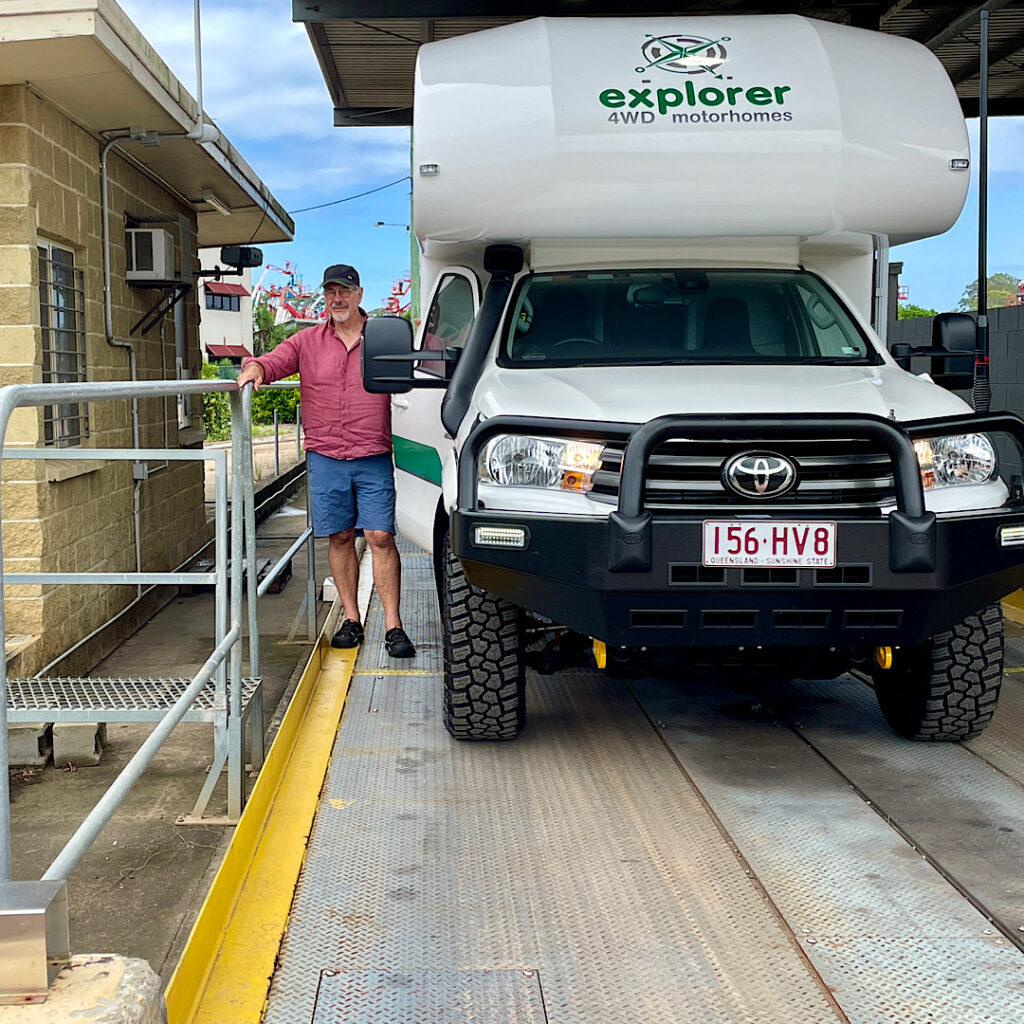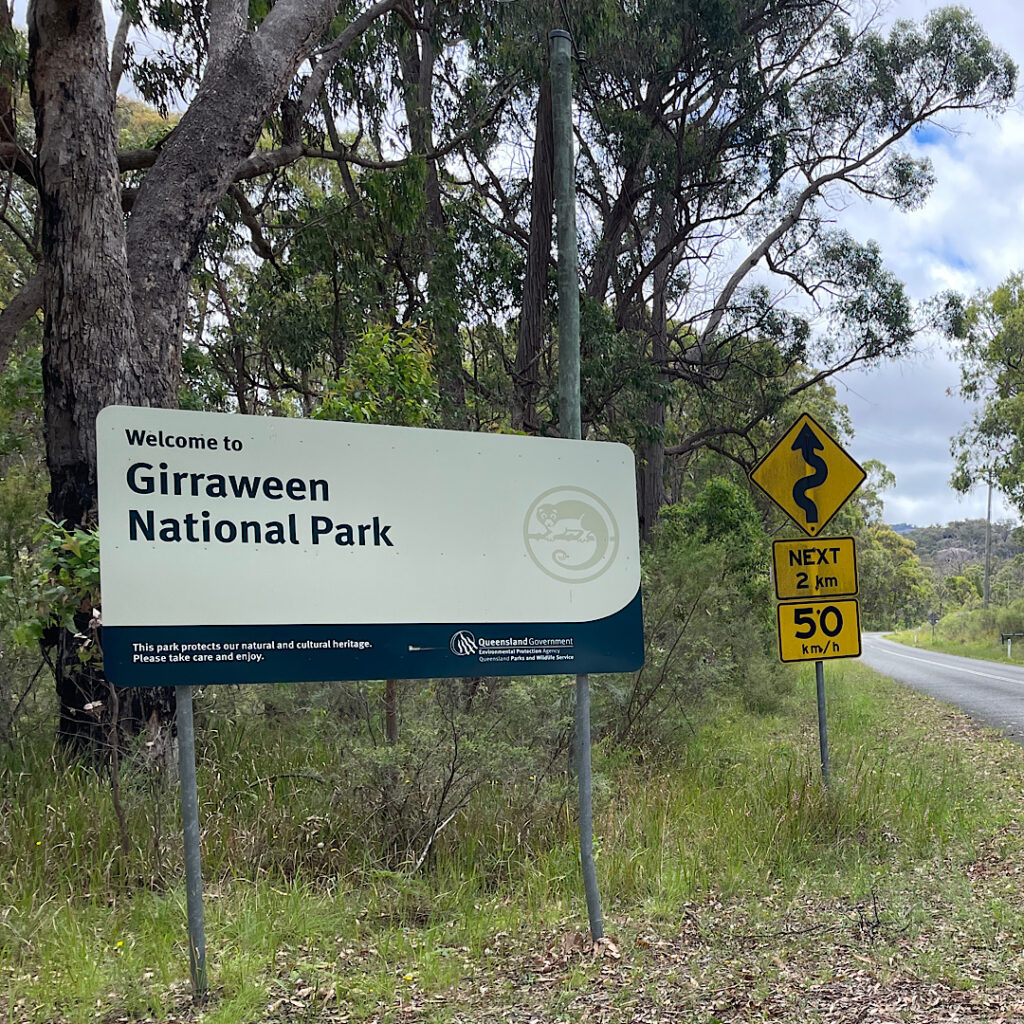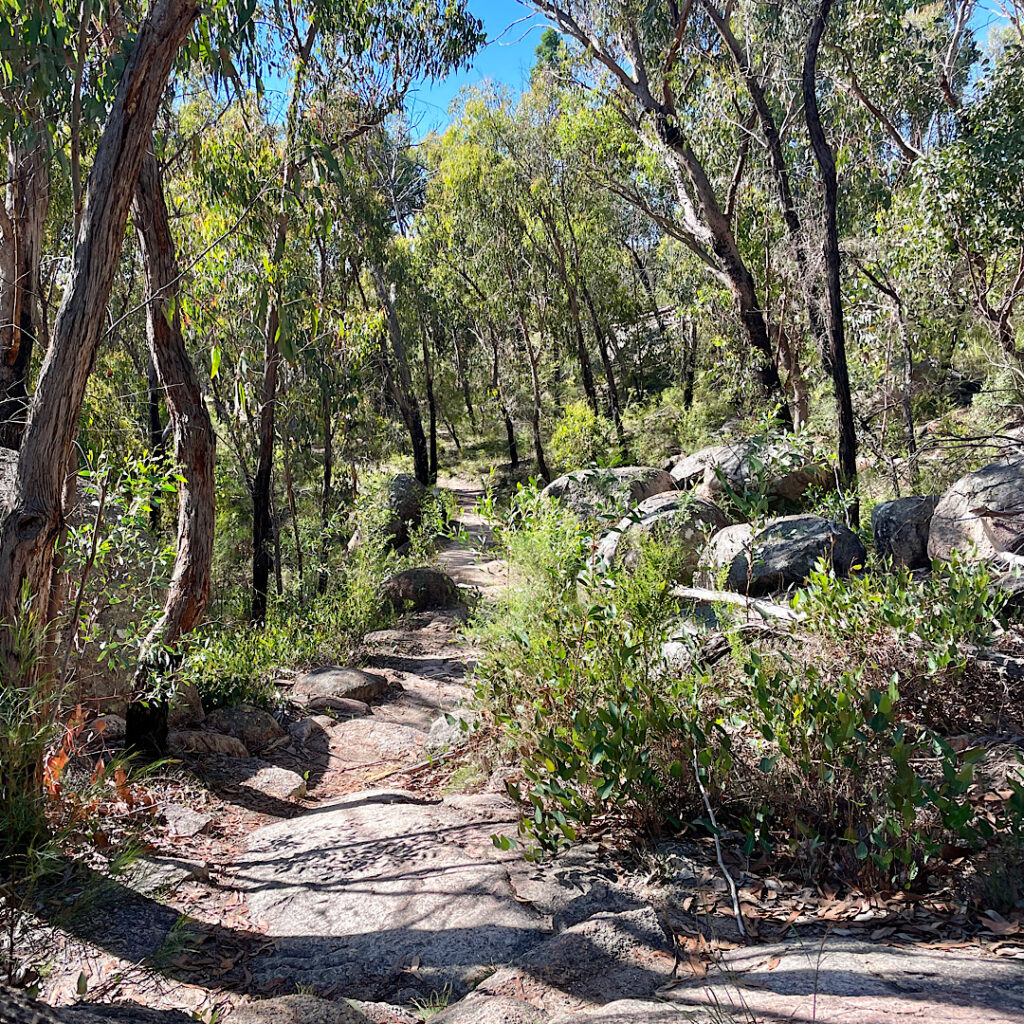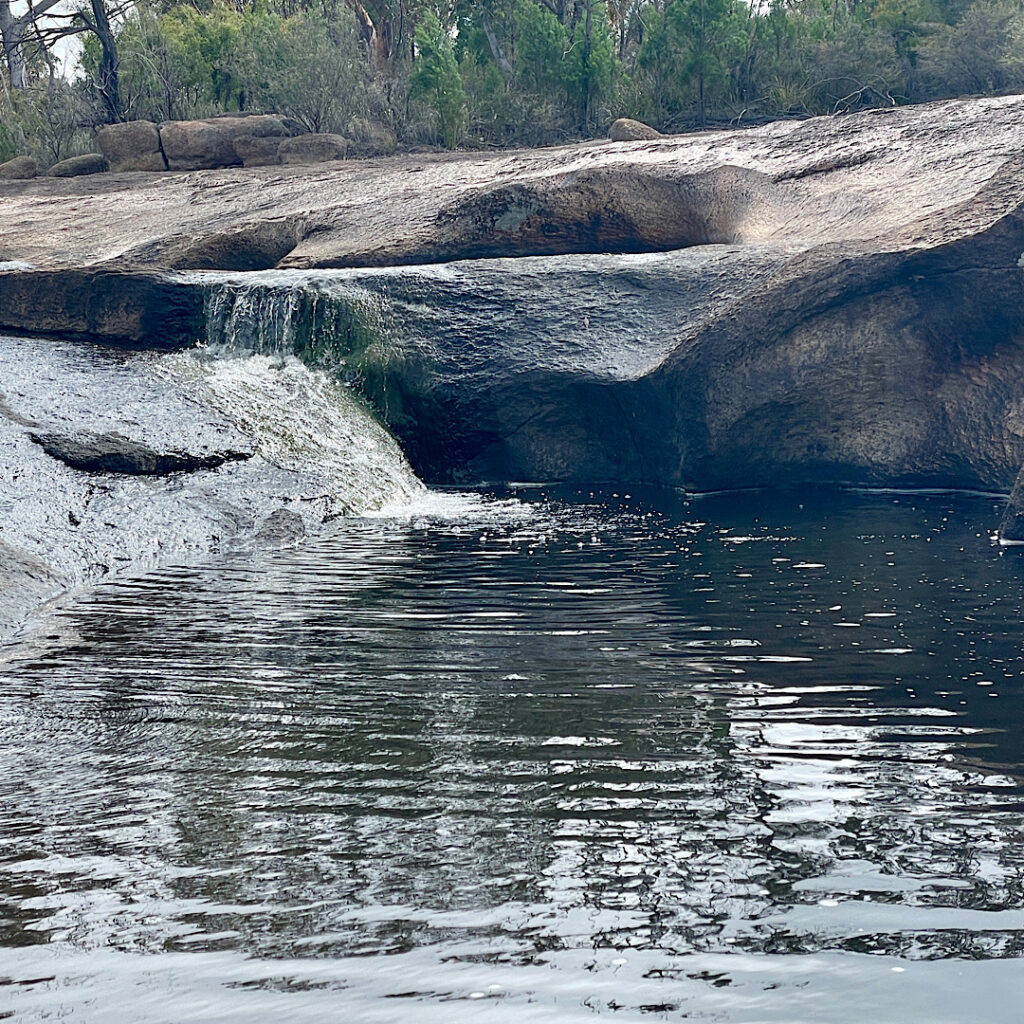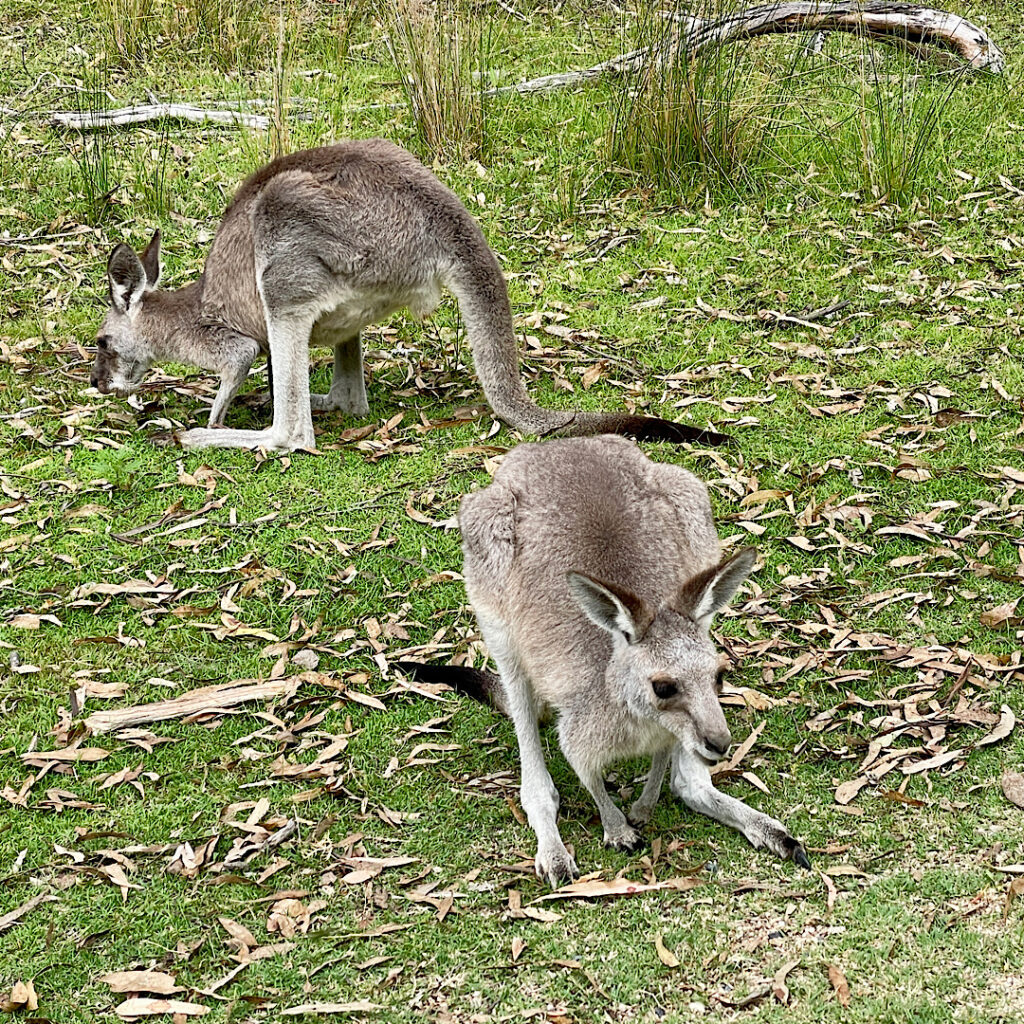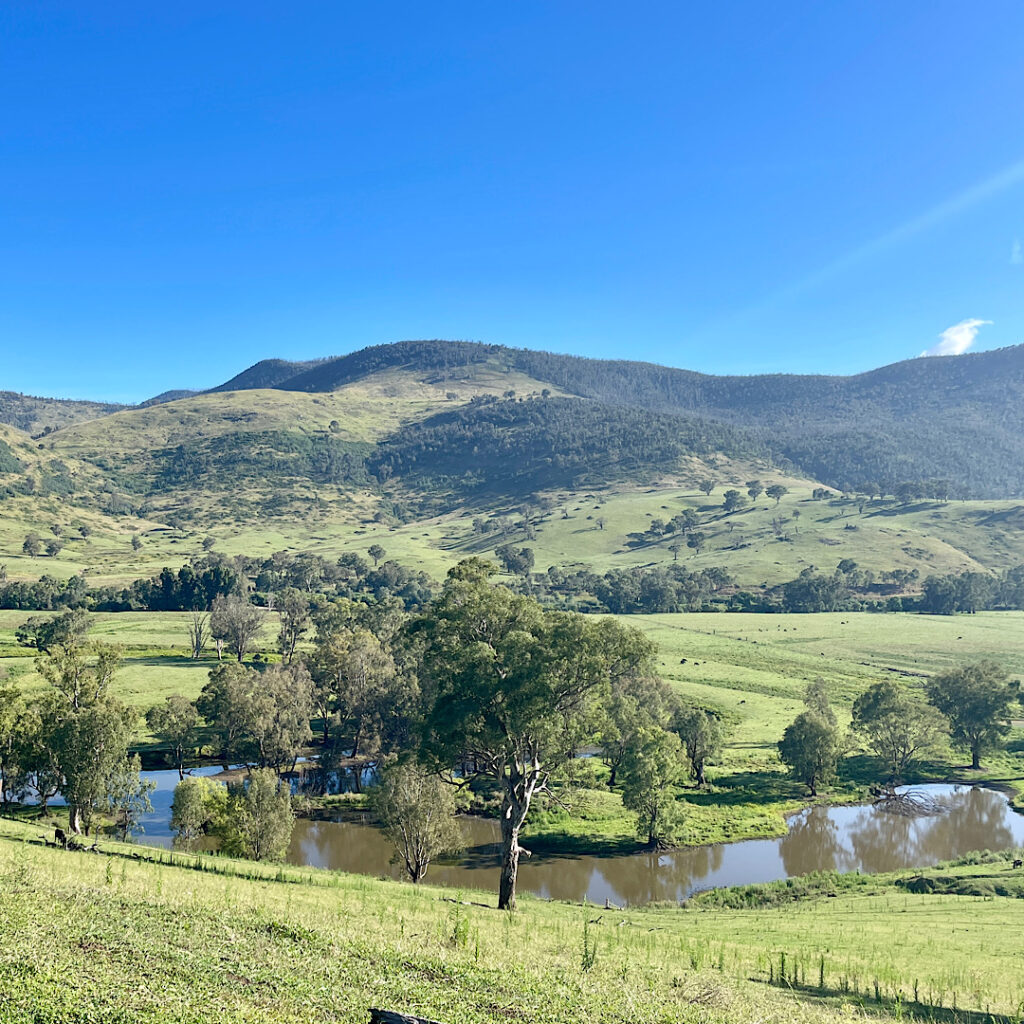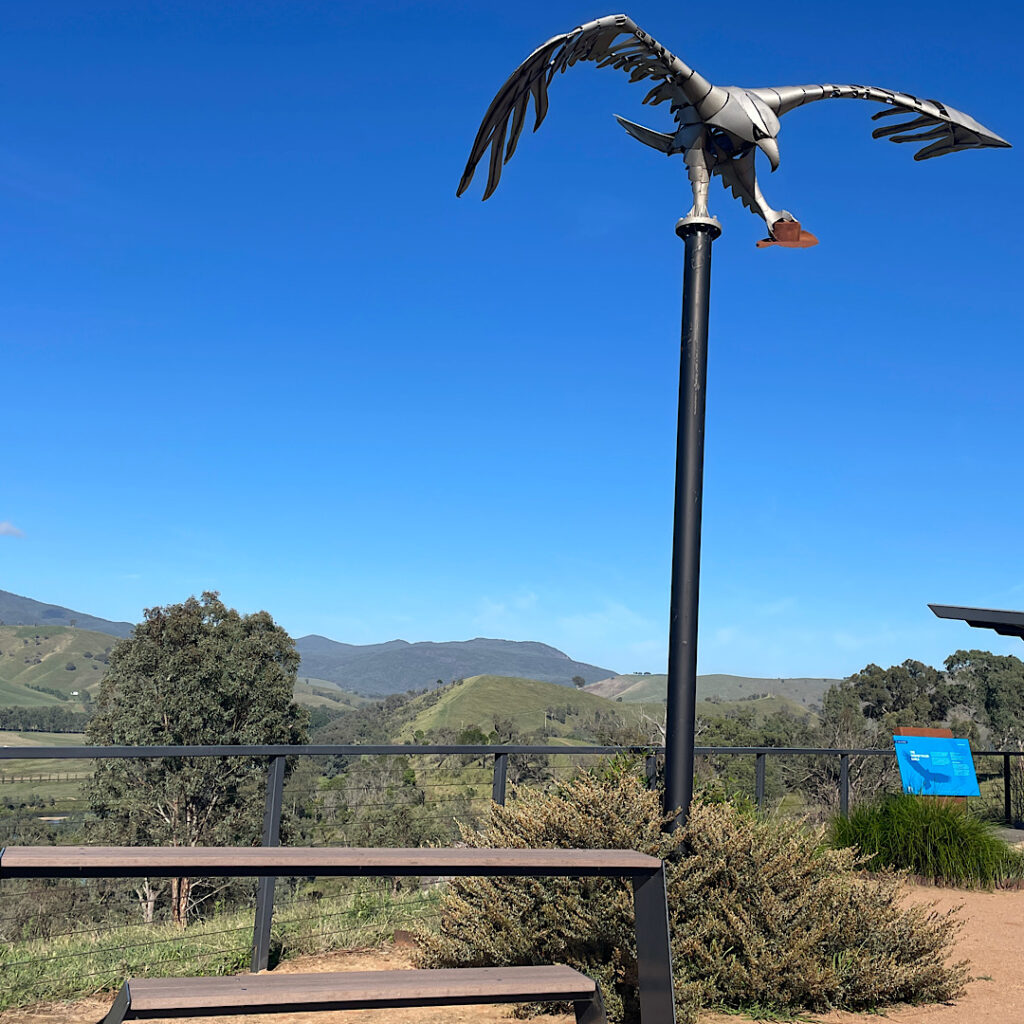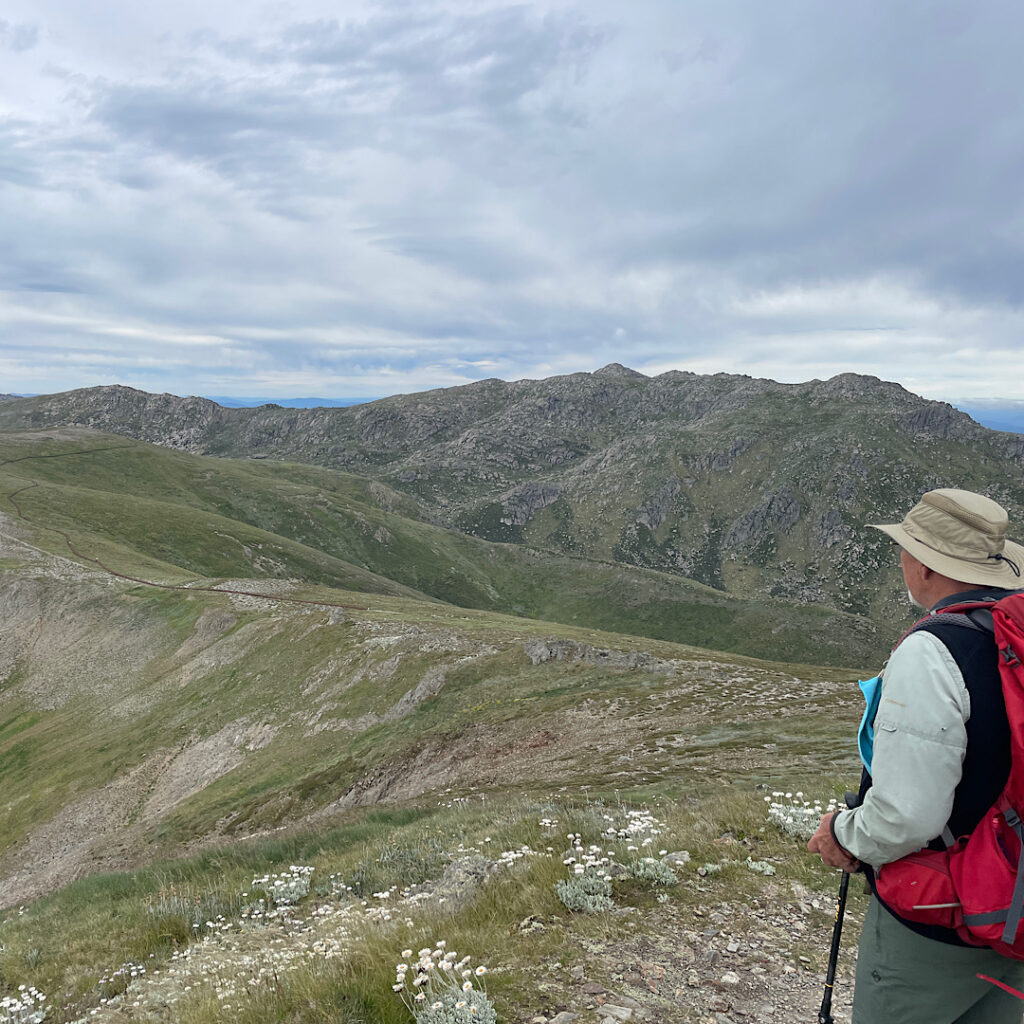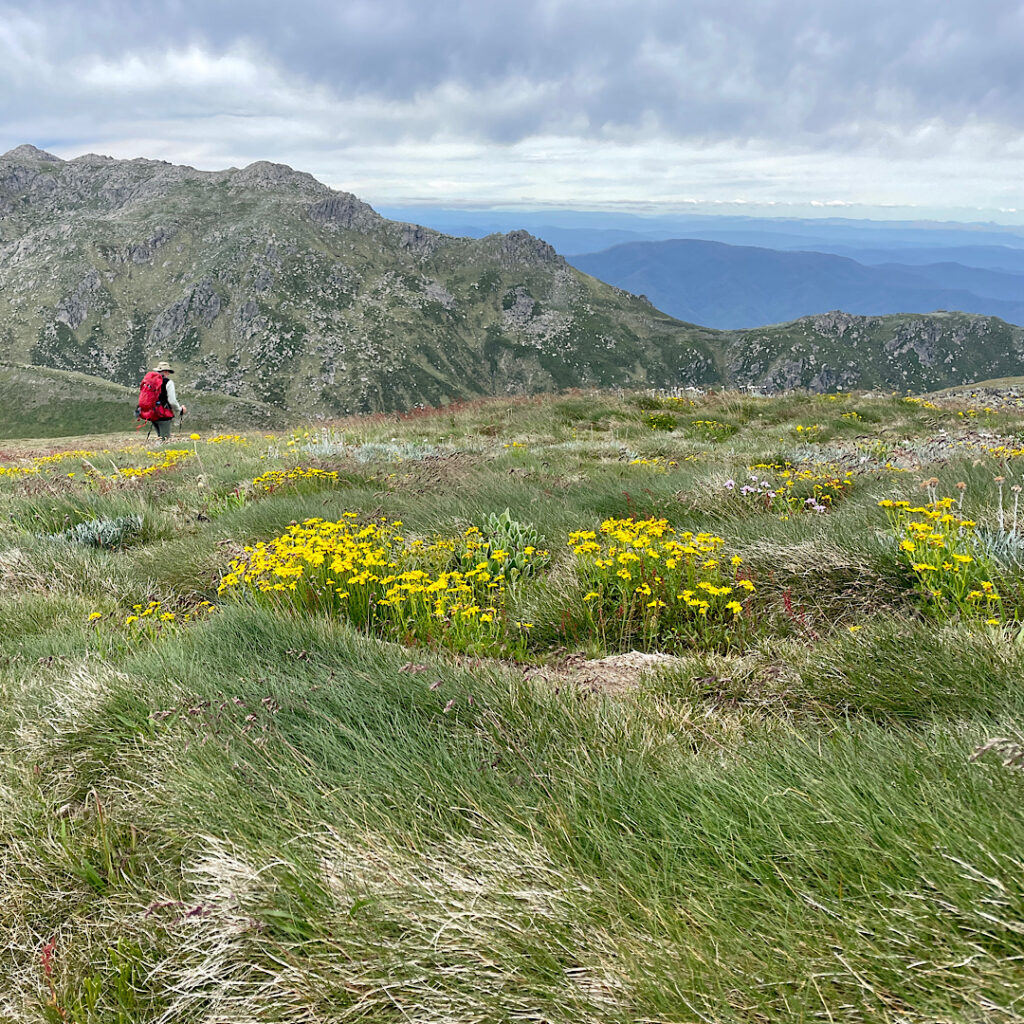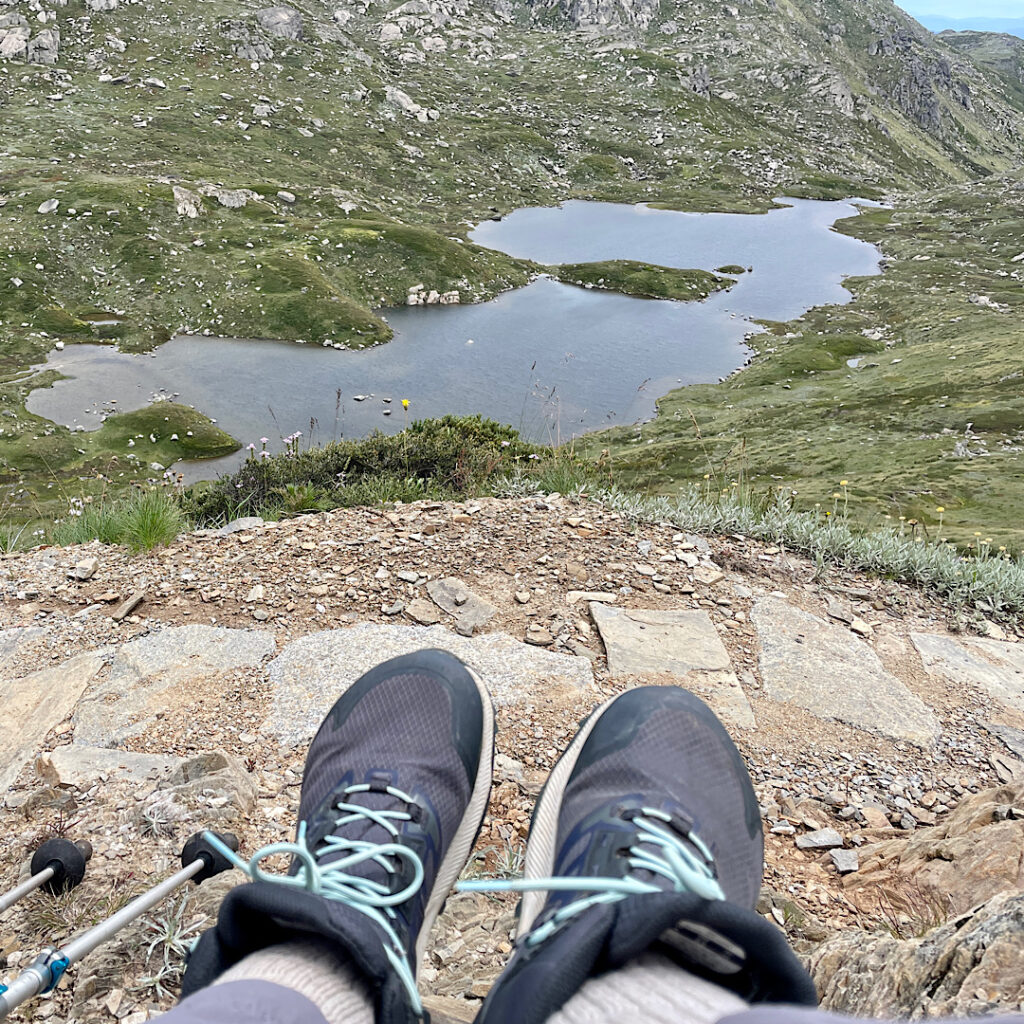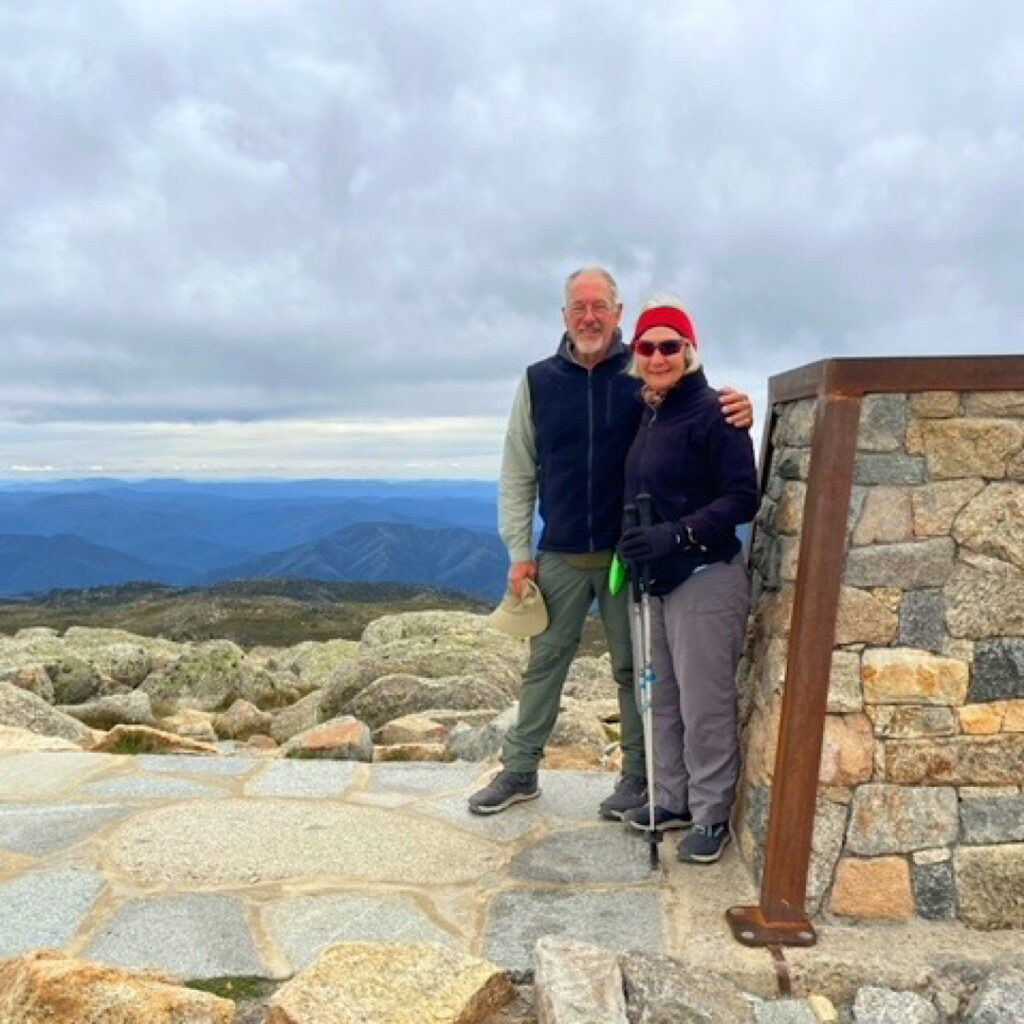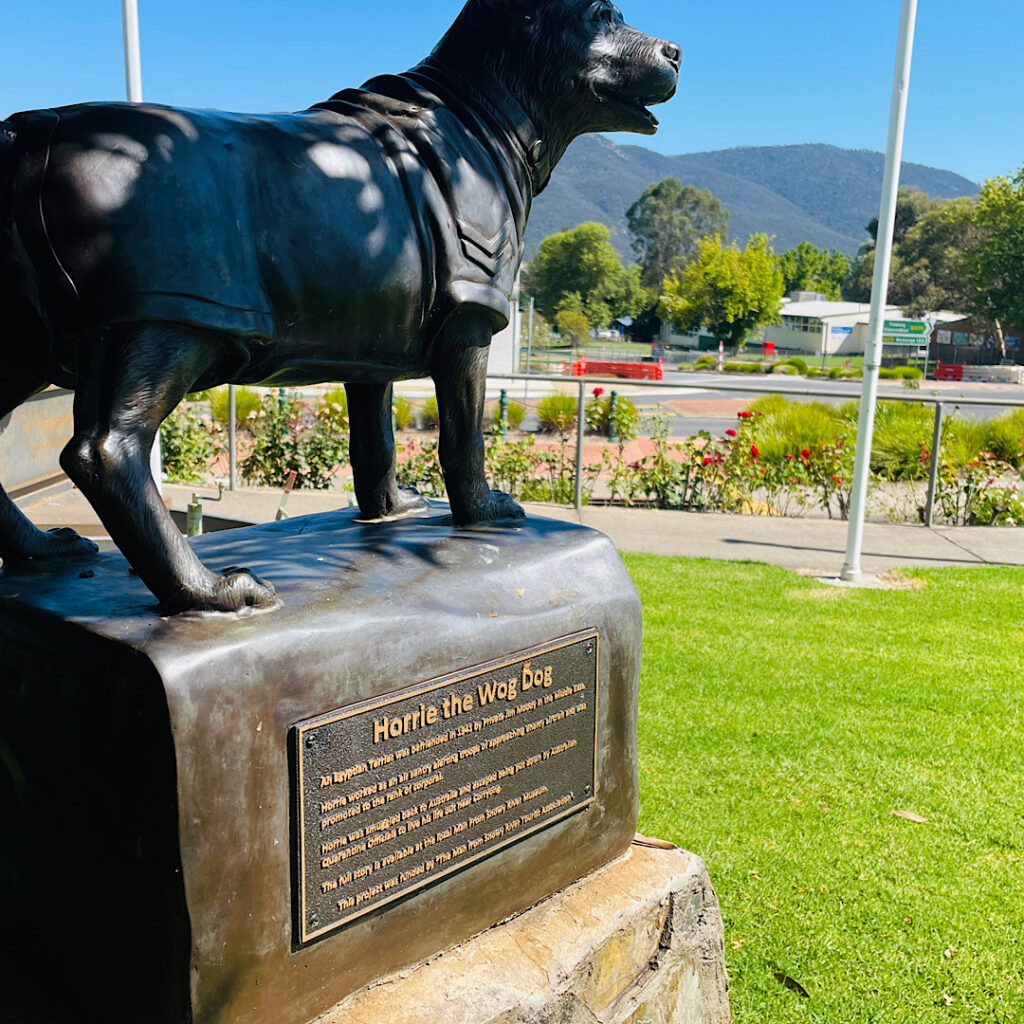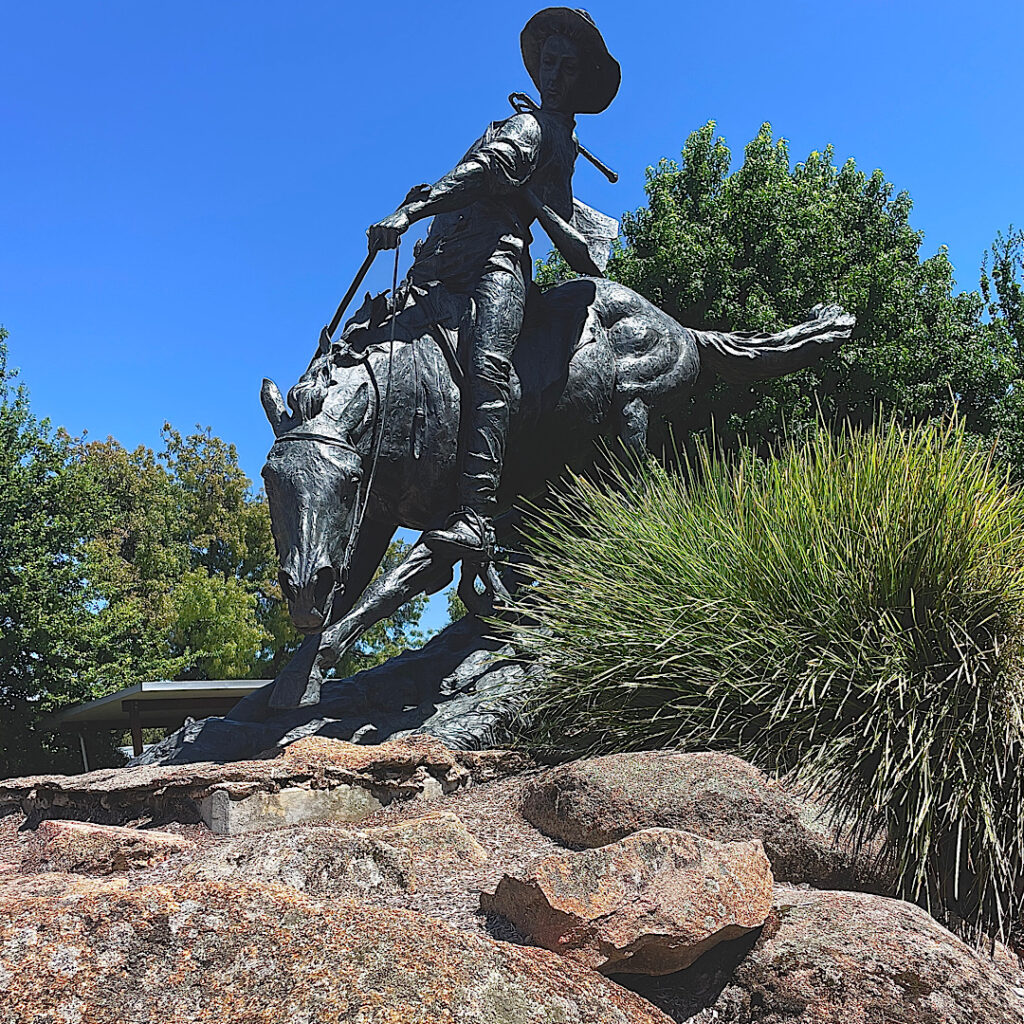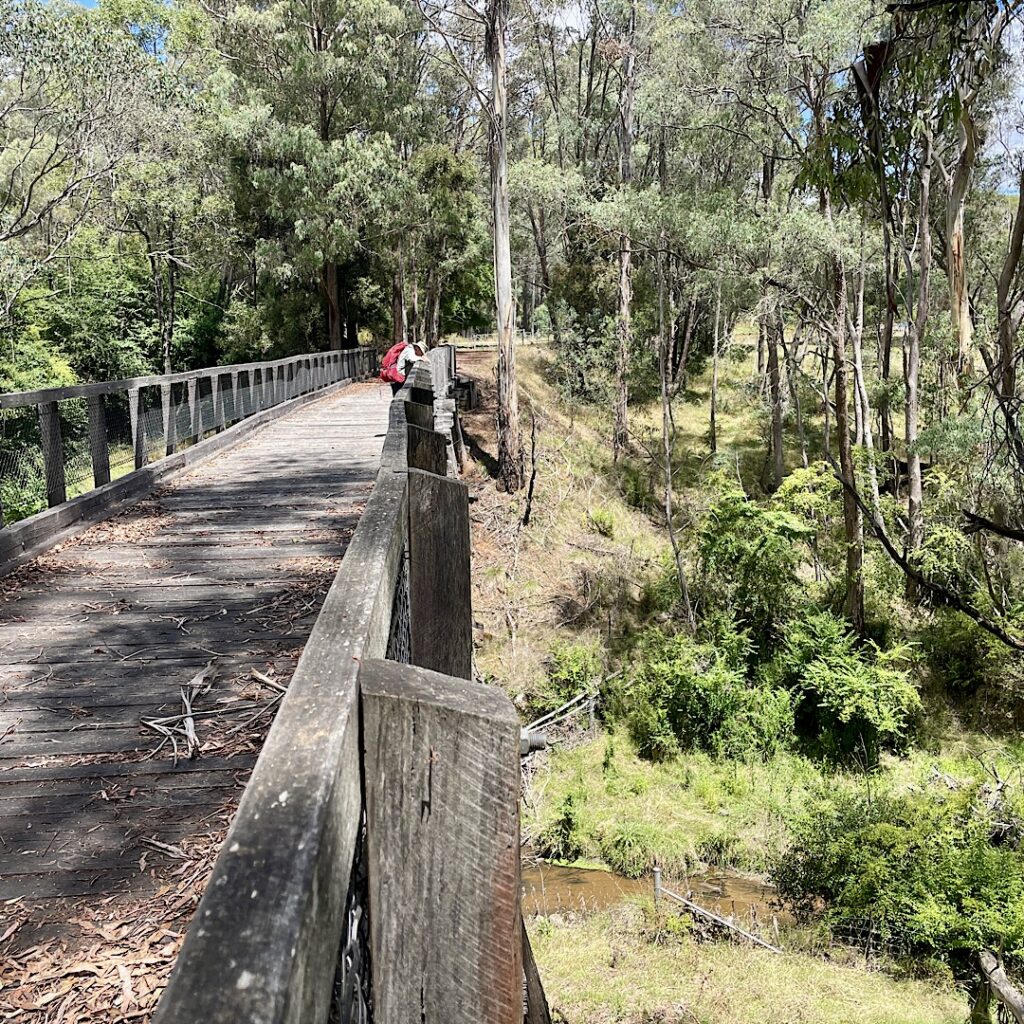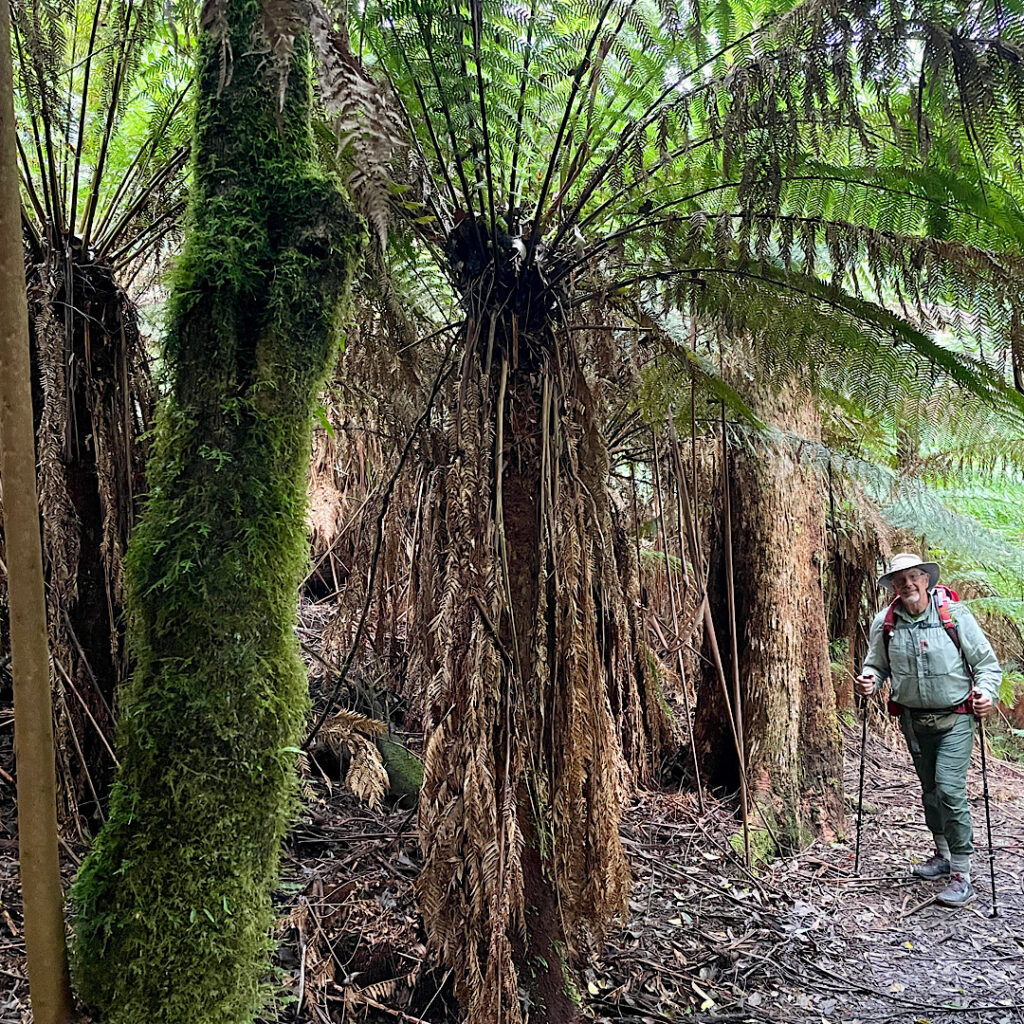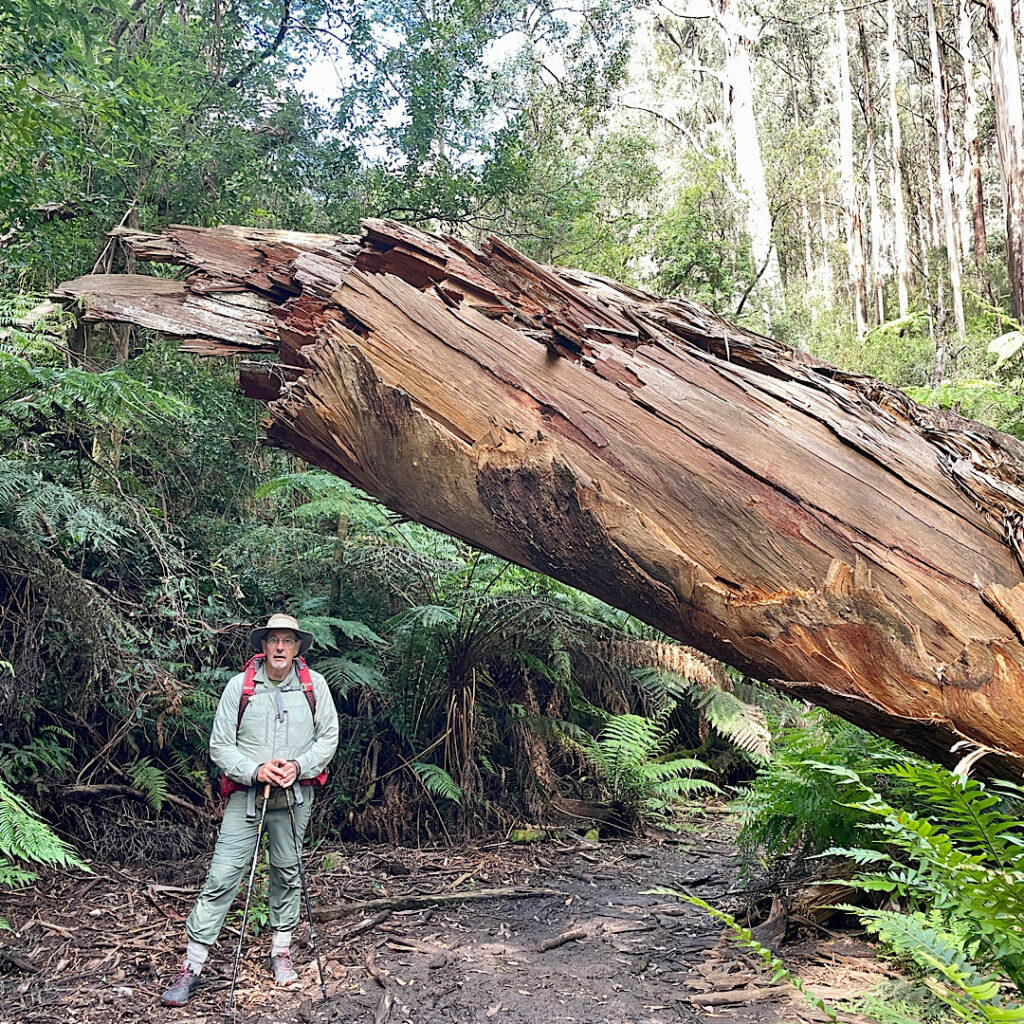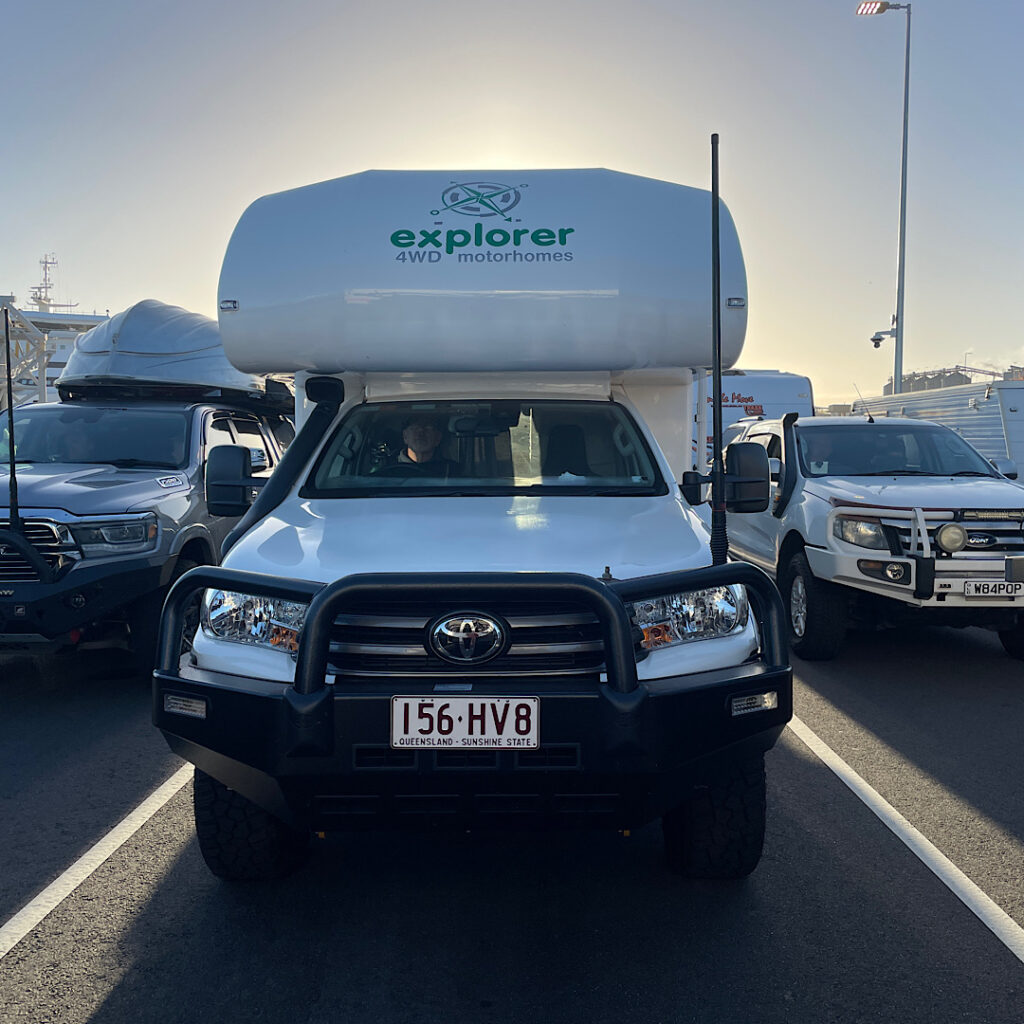2nd – 12th February
Friday 2nd
The weather was very average, with lots of wind. The first 3 hours on the Spirit of Tasmania crossing Port Phillip Bay were blissfully calm, but … Bass Strait was choppy! Our booked recliner chairs were at the stern of the ship which I’m led to believe is the best spot in rough seas. Once we were in the Strait I only got up once to go to lunch and very nearly wished I hadn’t.
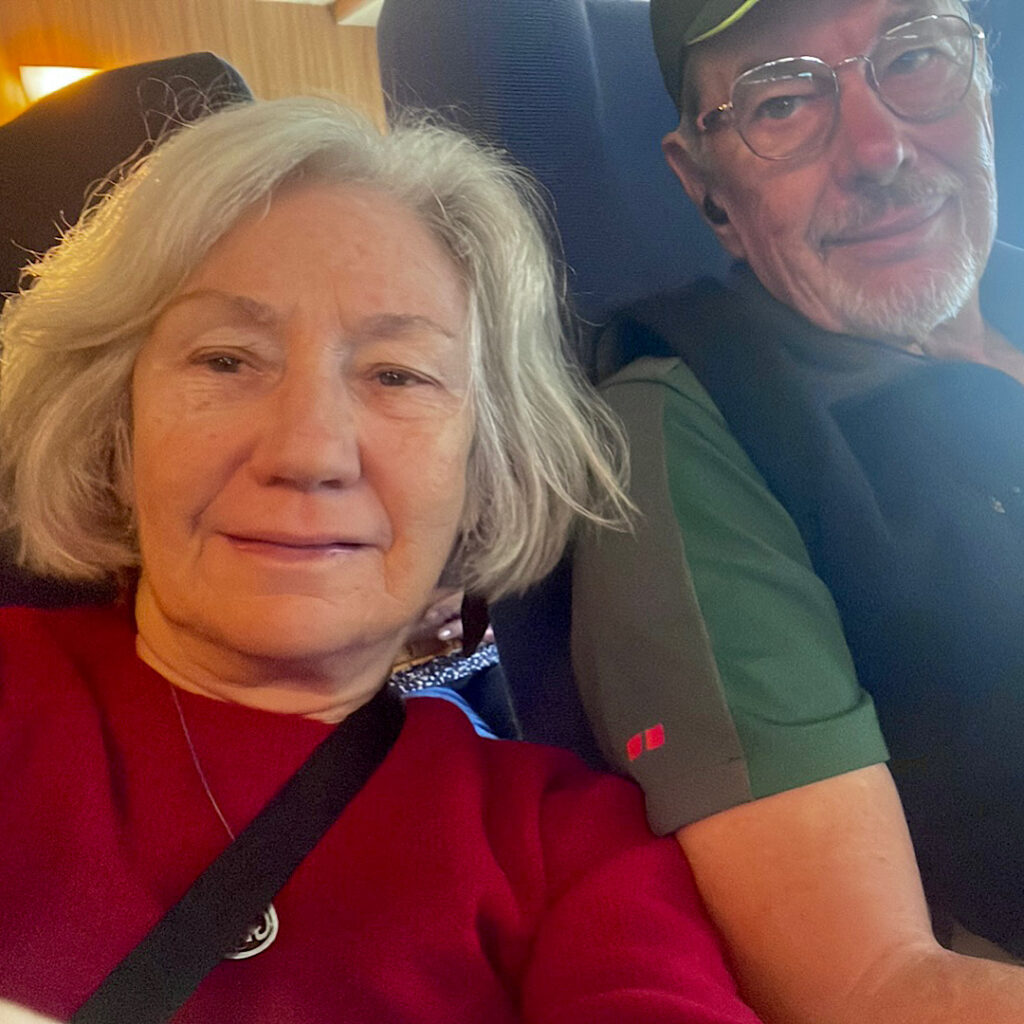
Anyway one book nearly finished and 11 hours later we disembarked in Devonport, Tasmania! So exciting!
Tonight we’re staying at the Ulverstone Golf Club camping area.
Saturday 3rd
A slow start to the day as we planned the next couple of weeks, replenished the fridge and settled in for the night at a quiet, pretty campsite on the banks of the Leven River.
Sunday 4th
Ahhh Tasmania! It really is relaxing with its rolling hills, green pastures, chubby cattle and sheep and, at the moment, clear blue skies. A drive south climbing through majestic eucalypts brought us to Preston Falls. A well-constructed 200m track with a few stairs led to a viewing platform on the cliff edge above a pretty waterfall dropping about 25m.
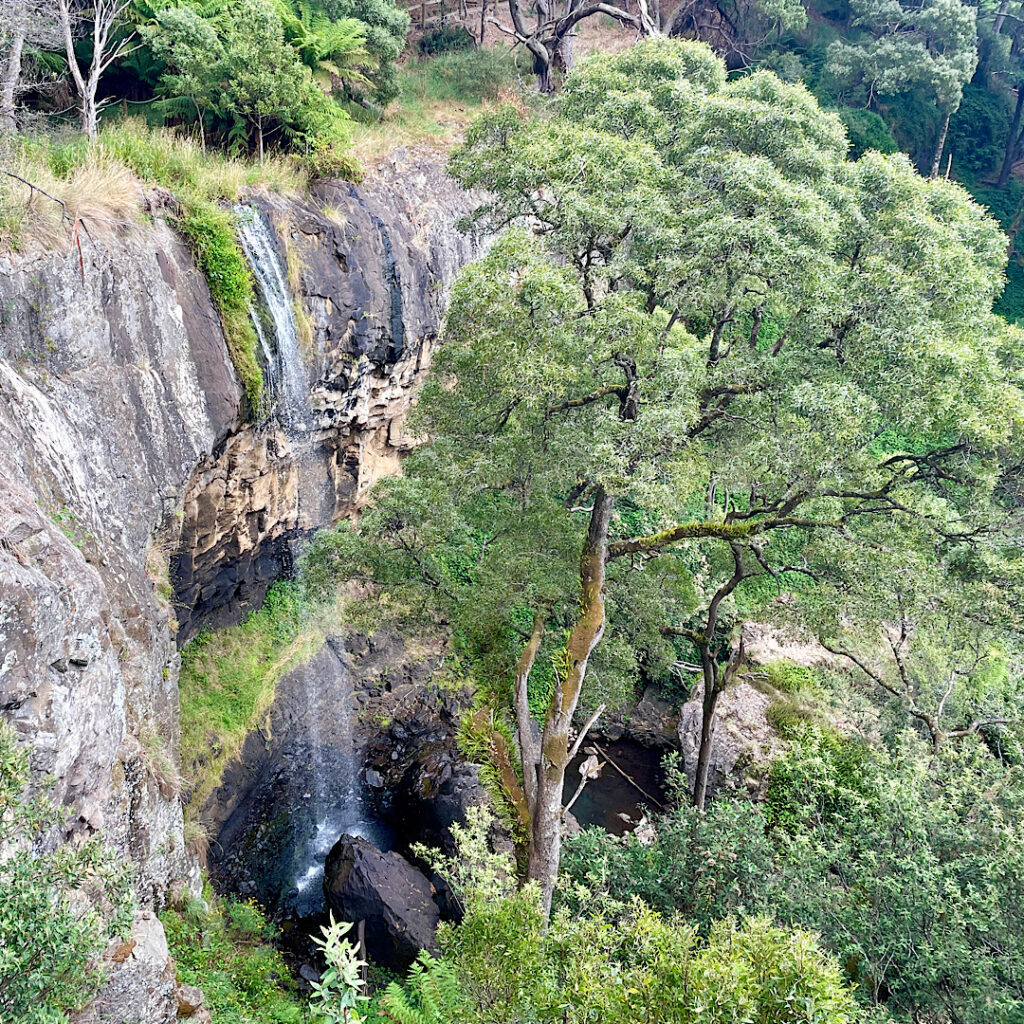
Back on the road southward Leven Canyon was our goal. The Leven River has carved the deepest canyon in Tasmania, some 275 metres below the lookouts. A large parking and picnic area was nearly full when we arrived. It’s also a free camp.
There are two lookouts over the canyon which can be accessed separately by short out-and-back walks, or a circuit which joins both lookouts together by “the steps”. Purposefully choosing to ascend “the steps”, we set off clockwise. A well-constructed path led downward through tall, mossy-trunked gums which sheltered a glade of giant man ferns (the term Tasmanians use for tree ferns).
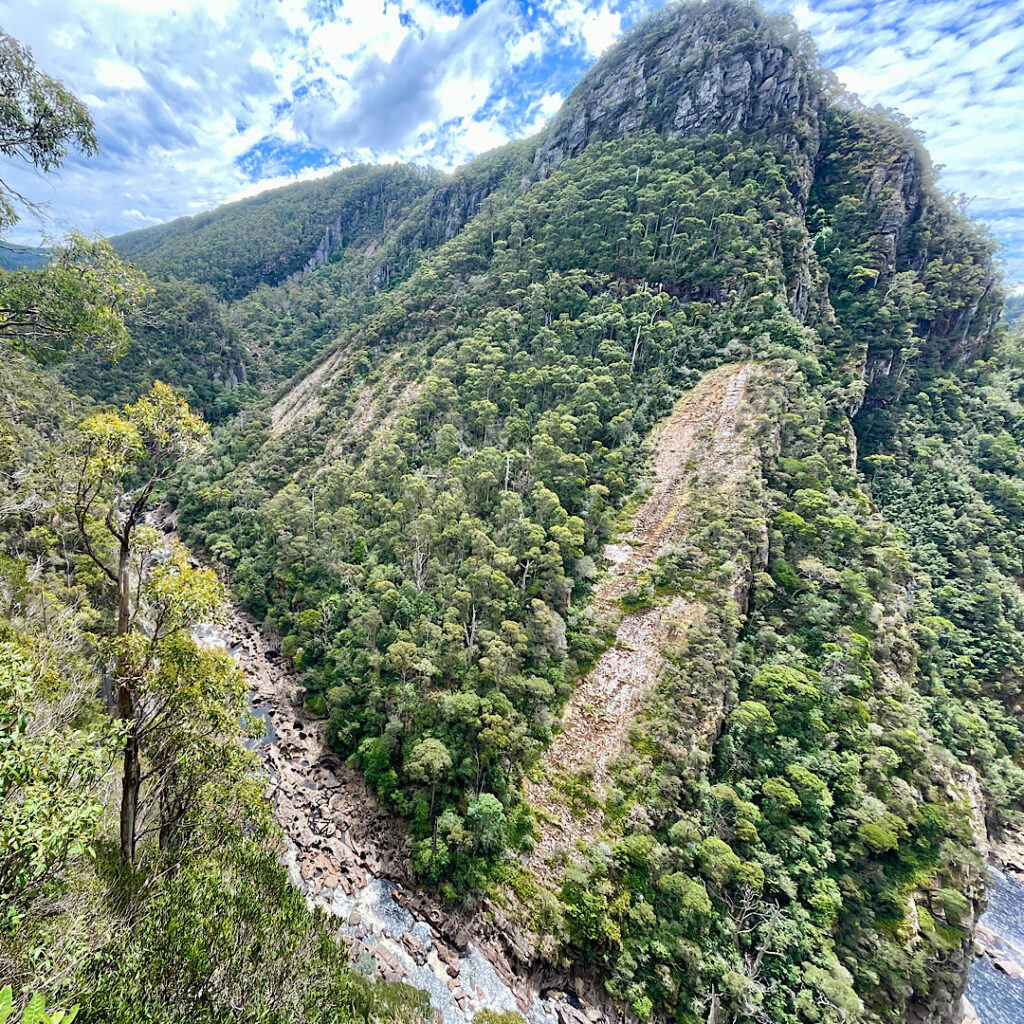
At The Edge Lookout a viewing platform is suspended above the cascading rapids of the Leven River. After enjoying the view we headed back a little way to where the track branched to go up the steps.
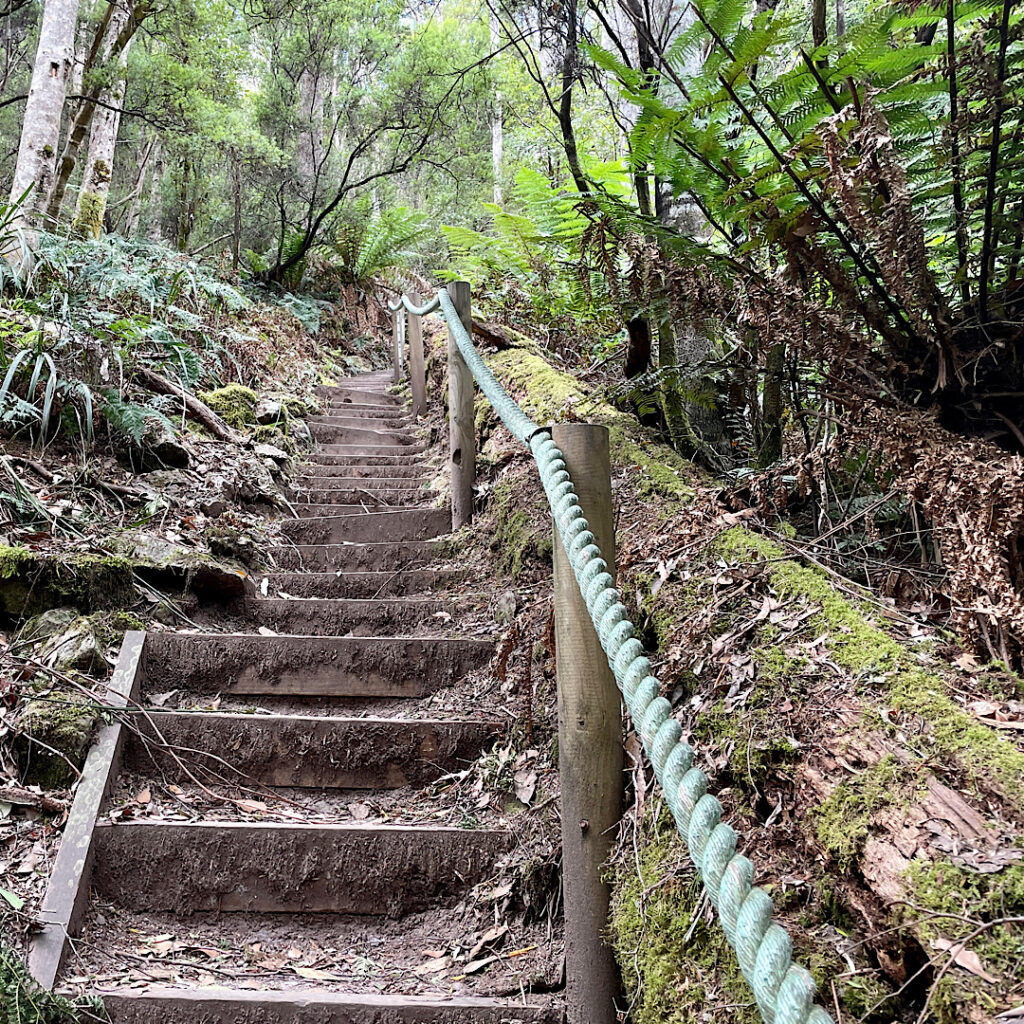
697 steps, to be precise! Bench seats along the way were engraved with the number of stairs you’d already done, the number to go, and how many stairs before the next bench seat. My walking poles were a godsend!
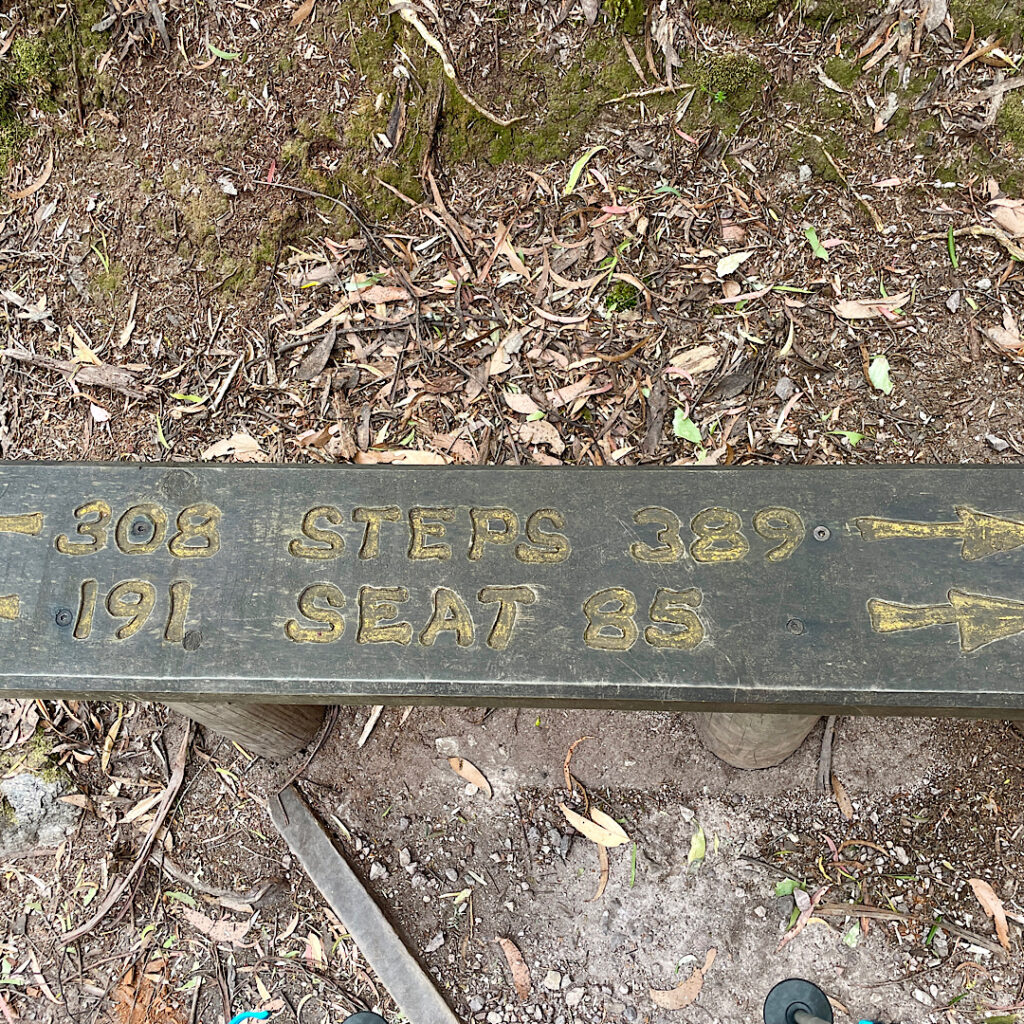
Back at the car we descended the range coming out in mixed farming country again. Tasmania supplies 75% of the World’s legal poppies for making codeine and morphine. Sadly we’ve missed the flowering stage, however the poppy heads are still on the plants, drying out before harvesting.
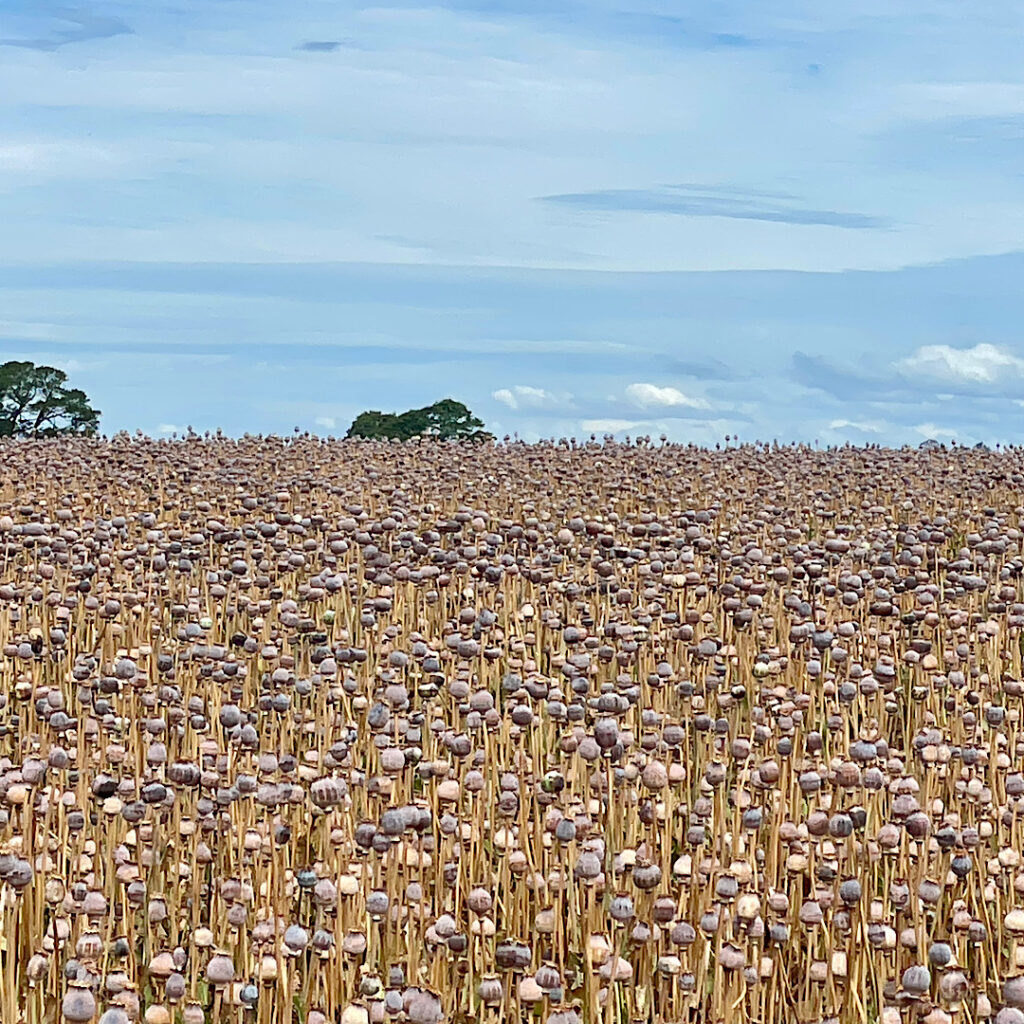
Our campsite tonight is a free camp on the coast near Penguin ignominiously called Sulphur Creek. No it didn’t smell of sulphur!
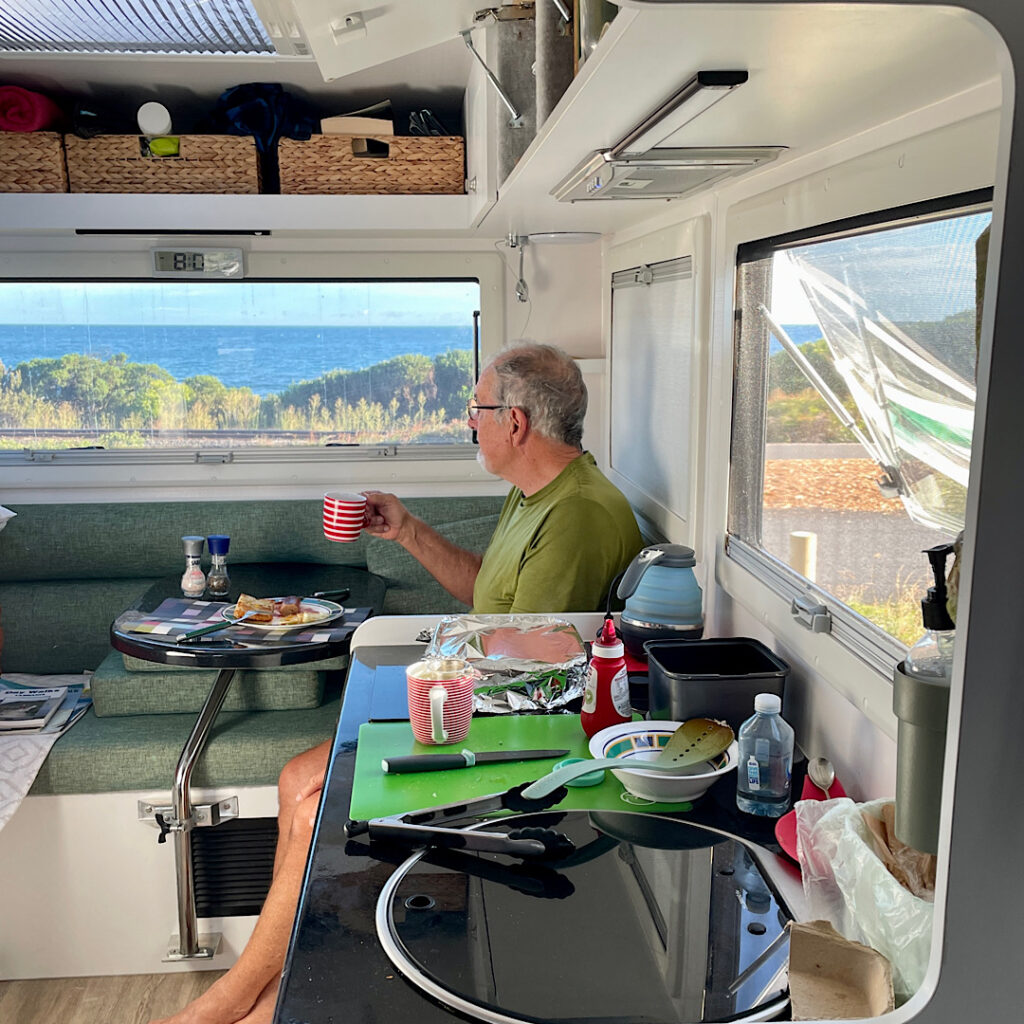
But first we picked up a few groceries in Penguin, wandered the streets a little and had a beer at the Penguin Brewing company – delicious it was too!
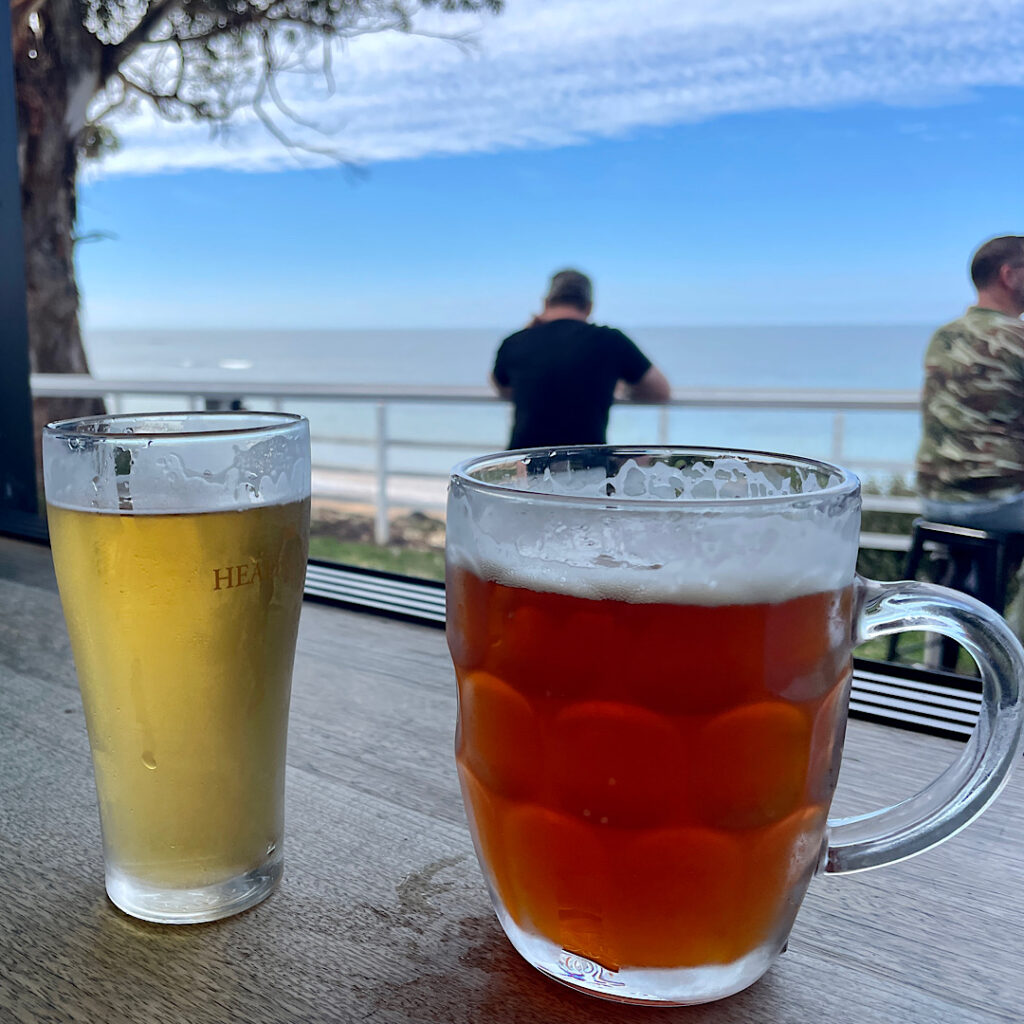
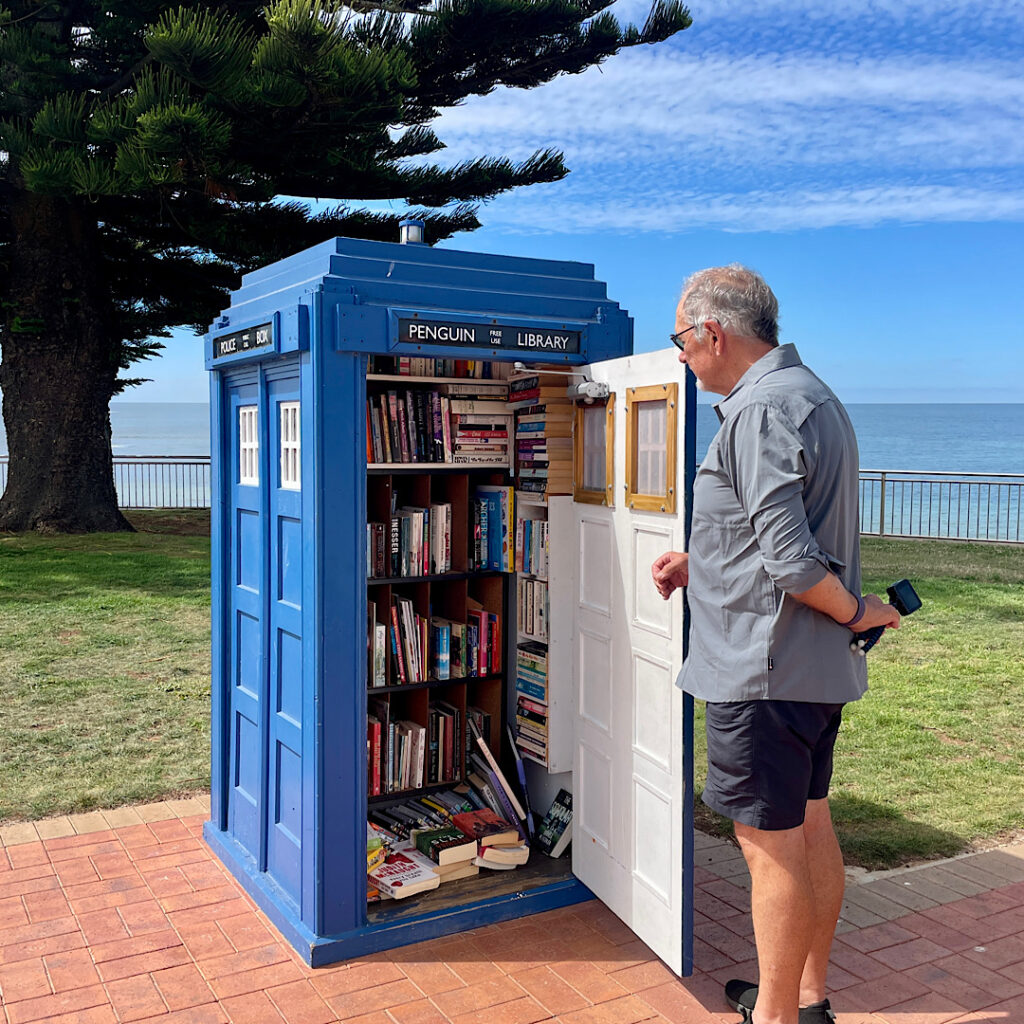
At the campsite we spent a pleasant Happy Hour with Explorer owners Margie from Melbourne and Kev and Denise from Buderim. Explorer motorhome owners are well-connected through a Facebook group, and it just so happened that quite a few of us happen to have chosen Tasmania to visit this year.
Monday 5th
Continuing westward we found a walk to do at Rocky Cape National Park – the 11km Broadview Circuit Track. It starts with a steep climb (does any hike not start with a steep climb!!) before entering the National Park. A well-defined sandy path through heathlands gives great views back to Sisters Beach, our starting point, before coming to the junction to summit Broadview Hill. The hilltop provides sweeping views of the coastline, and our path yet to tread.
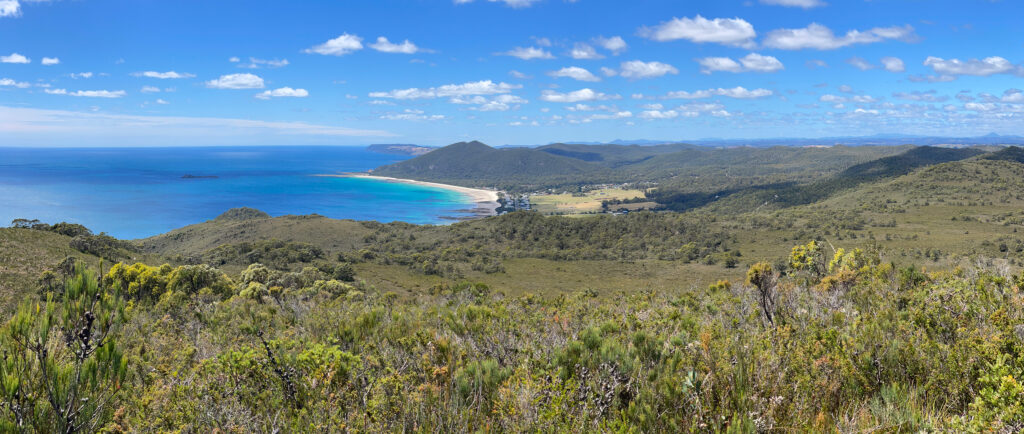
Back on the good path we headed to Anniversary Point. A steep descent brought us down onto the beach where we were fortunate to have arrived at low tide – good, firm sand to walk on. This interesting little bay has offshore rocks known as The Five Sentries.
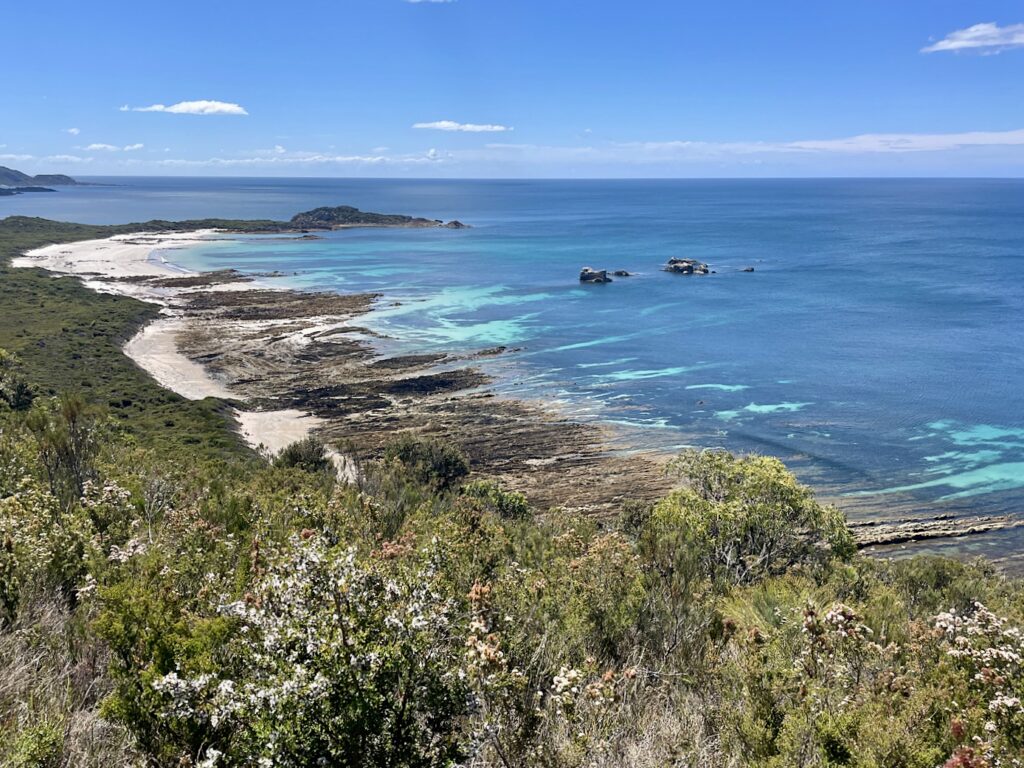
About a kilometre along the beach it becomes quite rocky with a wide wave-cut platform making for fun rock-hopping.
The climb back off the beach again is, once-more, very steep. The flora is now predominantly a banksia grove, with the largest banksias I’ve ever seen – some trunks being so big you couldn’t get your arms around them to hug.
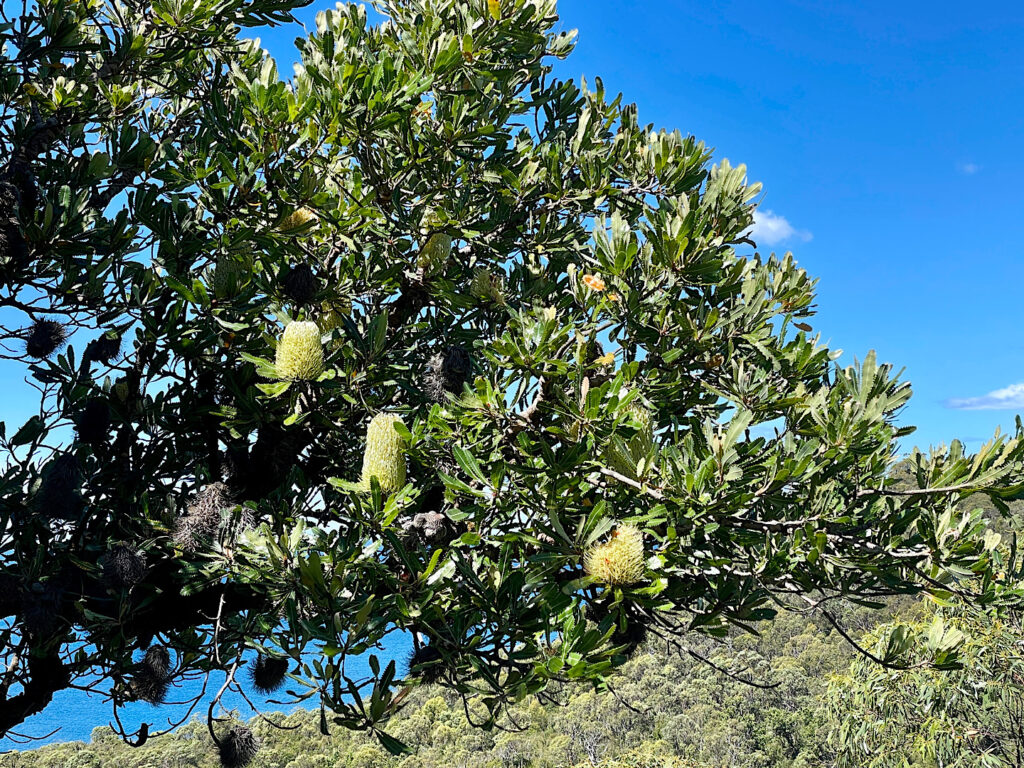
Lee Archer Cave at the bottom of a steep descent back down to the beach contains a midden and artefacts deposited over thousands of years, and are still used by the Aboriginal community for shelter and ceremony. Respectfully being asked not to enter the cave meant there wasn’t a lot to see from the mouth of this wide, deep cave.

Climbing back to the path again we continued on to Wet Cave – a narrow opening leads downwards into a wide, deep cave with a pool at the end. Soon after leaving the cave the track leads back onto the beach for a short walk to the boat ramp and back to Harvey, our motorhome. And so ended another enjoyable hike with an array of flora and lots of birdlife and lizards.
A drive to Stanley and an early night after a well-deserved shower was in order.
Tuesday 6th – Wednesday 7th
Stanley is a pretty little town with its many beautifully preserved historic buildings from its heyday as the centre of the Van Diemen Land Company and also the birthplace of Joseph Lyons, Australian Prime Minister (1932 – 39). Consequently Stanley became the perfect choice to film the movie The Light Between Oceans, a post World War I drama.
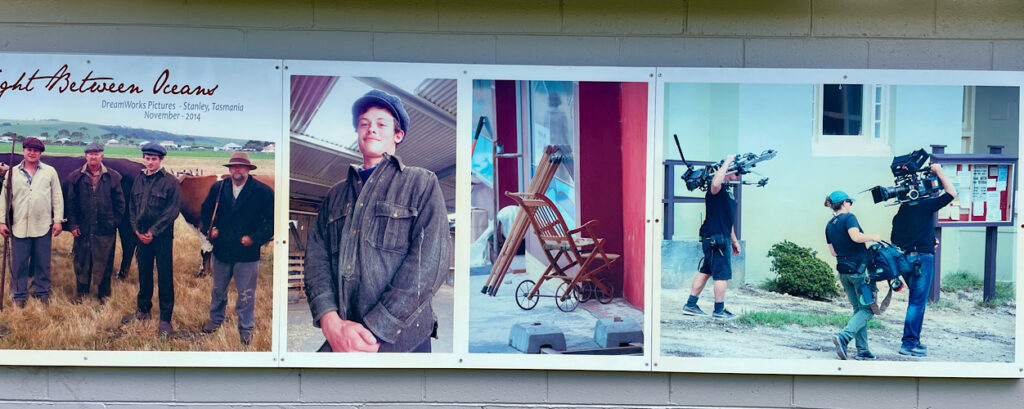
But the most striking landmark in Stanley is The Nut! In 1798 Matthew Flinders described it as “a cliffy round lump that resembles a Christmas cake”. This stump of an old volcano rises some 150 metres above sea level.
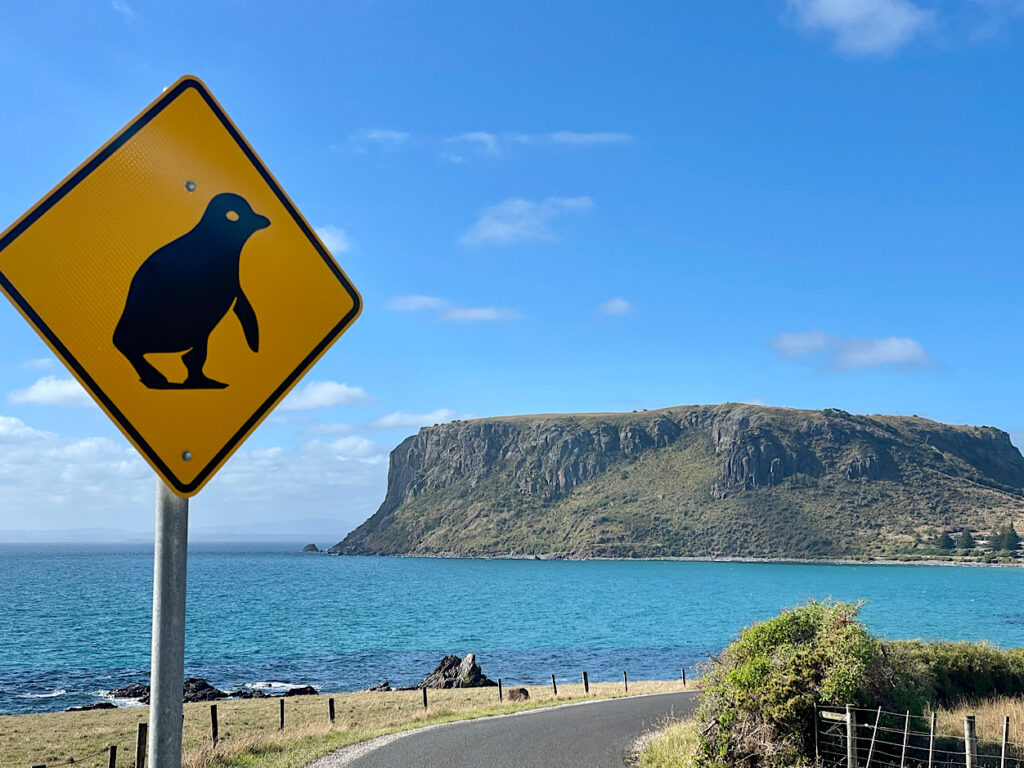
We climbed the very steep path to the top and wandered the 2.5km circuit path that follows the cliff line. A pretty and varied walk with unobstructed views all around.
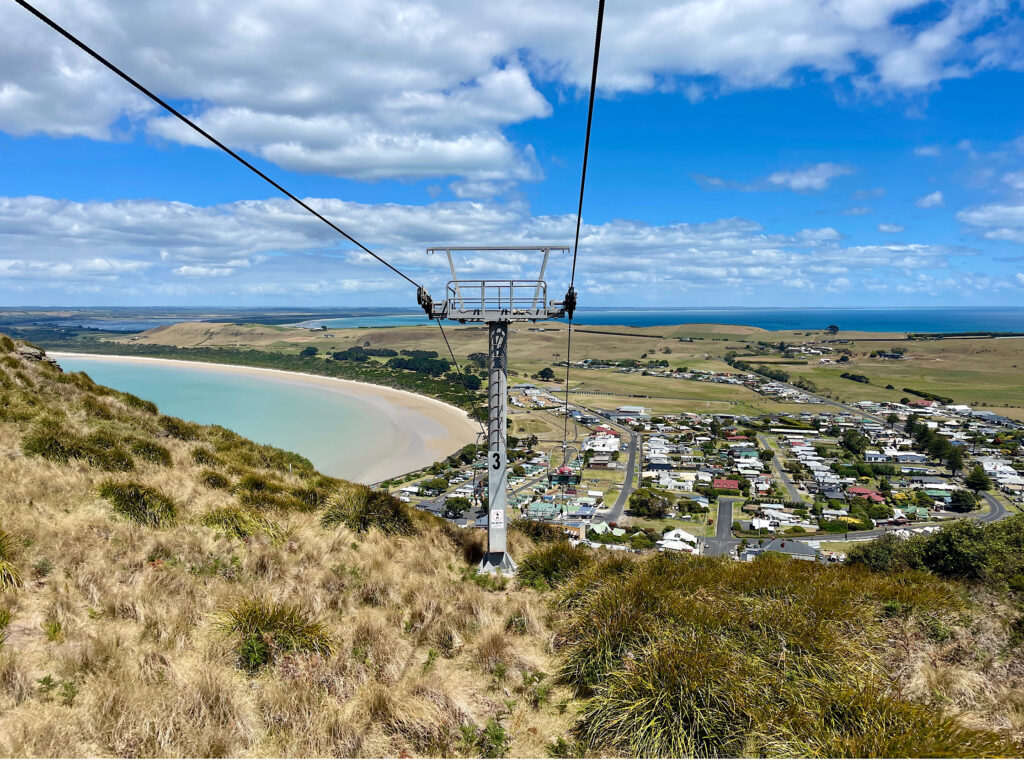
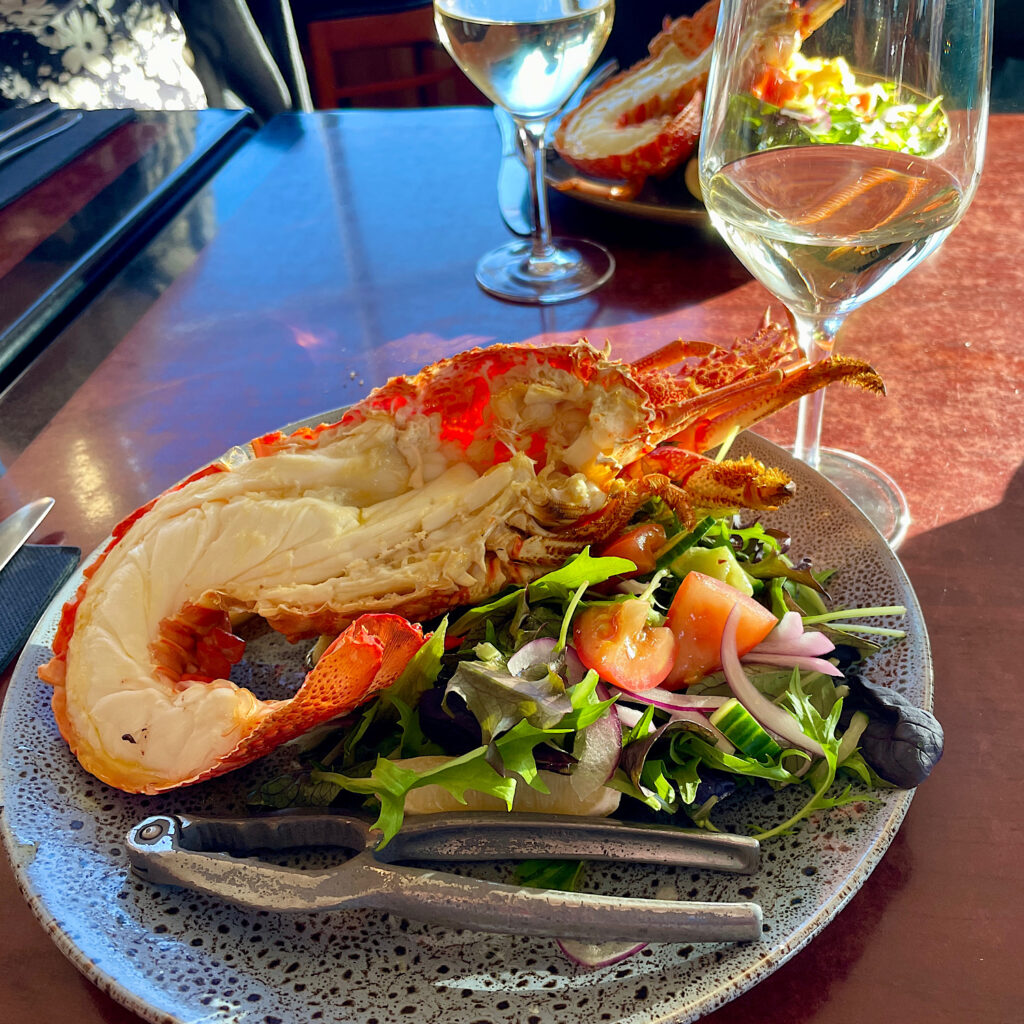
Thursday 8th Feb
Not far out of Stanley is Highfield House, the now restored 1830’s home of Edward Curr, the Chief Agent of the Van Diemens Land Company. The history of this first settlement in north-west Tasmania is a sordid one with maltreatment of the convicts assigned to the Company and a massacre of the local aboriginals.
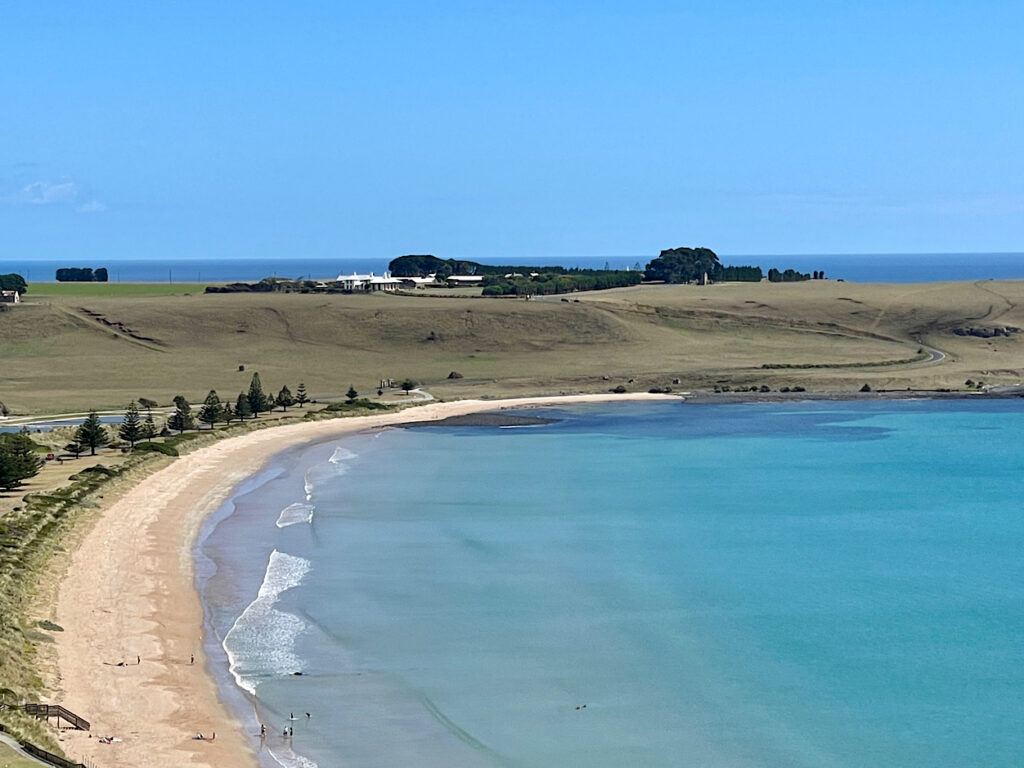
Popping into many of the little beachside communities along the northern coastline as we returned eastward rewarded us with unspoilt white beaches with the bluest ocean lapping at the shores.
Of interest is the 1.8km long jetty at Port Latta. Iron ore, mined at Savage River, is made into a slurry and transferred to the Port via an 85km long pipeline. Here it is converted into pellets and exported, mostly to Japan.
Rolling hills with grazing sheep and cattle, fields of onions, potatoes, poppies and tulips brought us to another volcanic plug known as Table Cape. Tulips have been grown on these rich basalt soils since 1984, the bulbs now being exported to Holland.
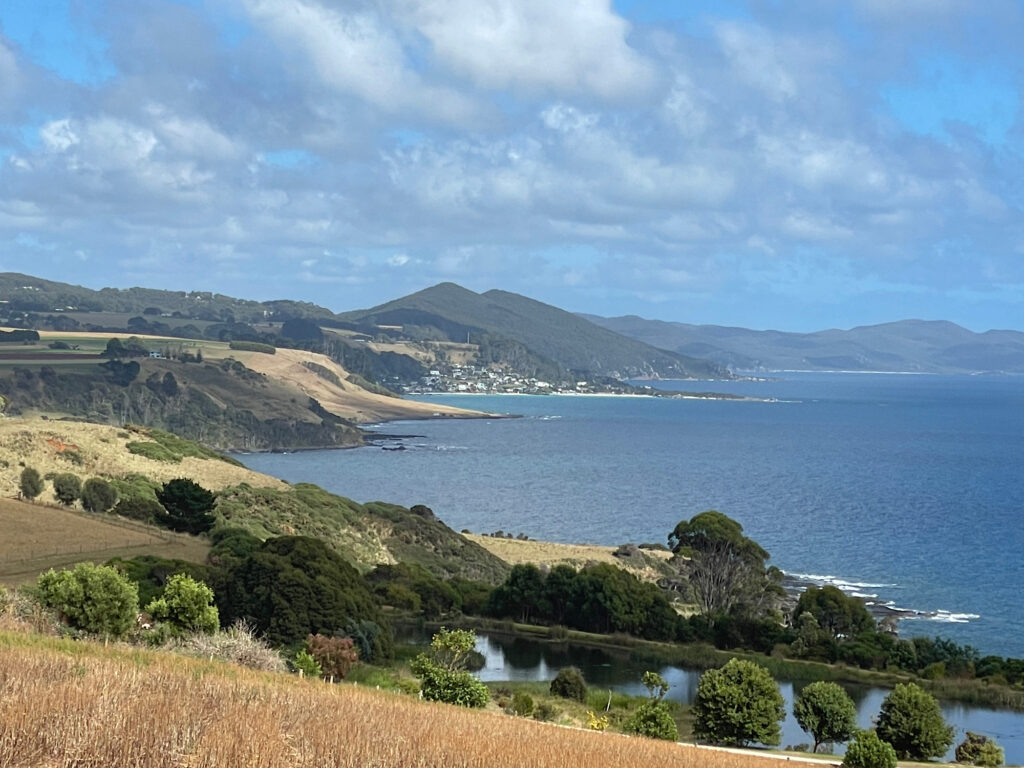
A lighthouse built in 1888 still warns shipping of the perils of this rocky coastline.
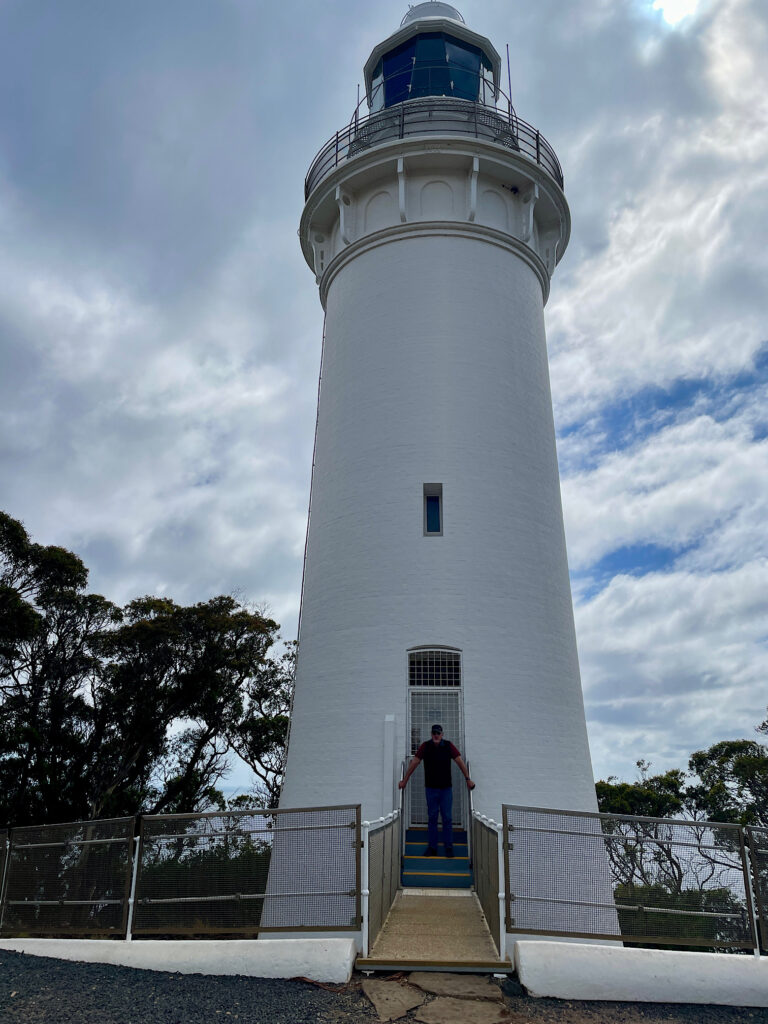
Friday 9th Feb
Today we mixed it with the locals. Don and Jan from Burnie, RVing friends from way back, met up with their traveling crew of about 5 other motorhomes at Hagley and invited us to join them. Tales of travels done and yet to do provided great entertainment.
Saturday 10th – Monday 12th Feb
No trip to Launceston would be complete without a visit to Cataract Gorge. This beautiful gorge formed by the South Esk River has a cafe, large grassed picnic area, a swimming pool, a chair lift and lots of walking tracks. We headed off on the 6km return walk along the cliff edges of the gorge to the Duck Reach power station. This station, one of the earliest hydro-electric power stations in the world, operated from 1895 to 1955.
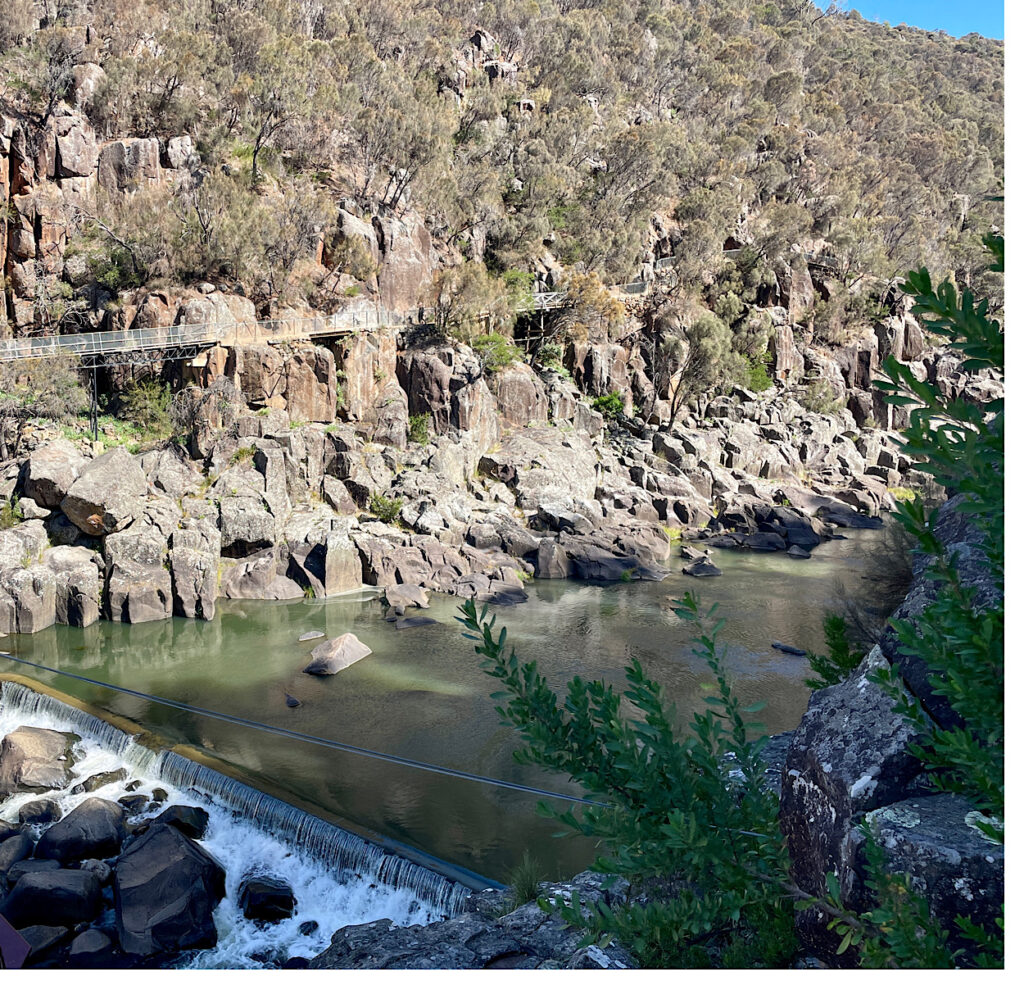
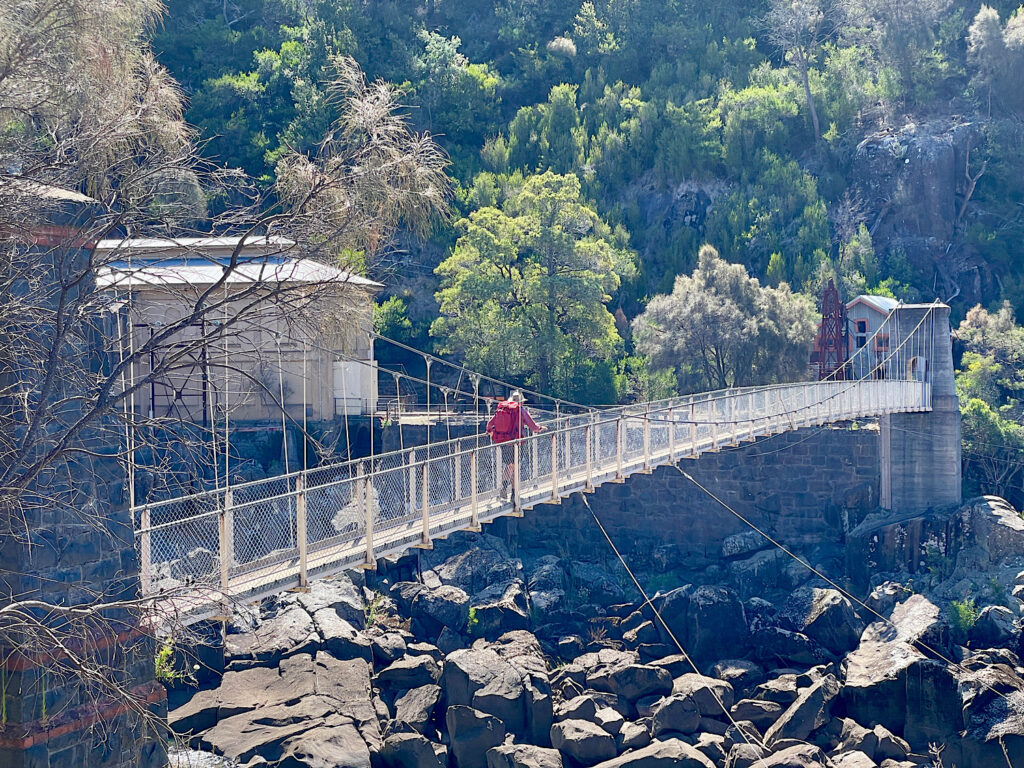
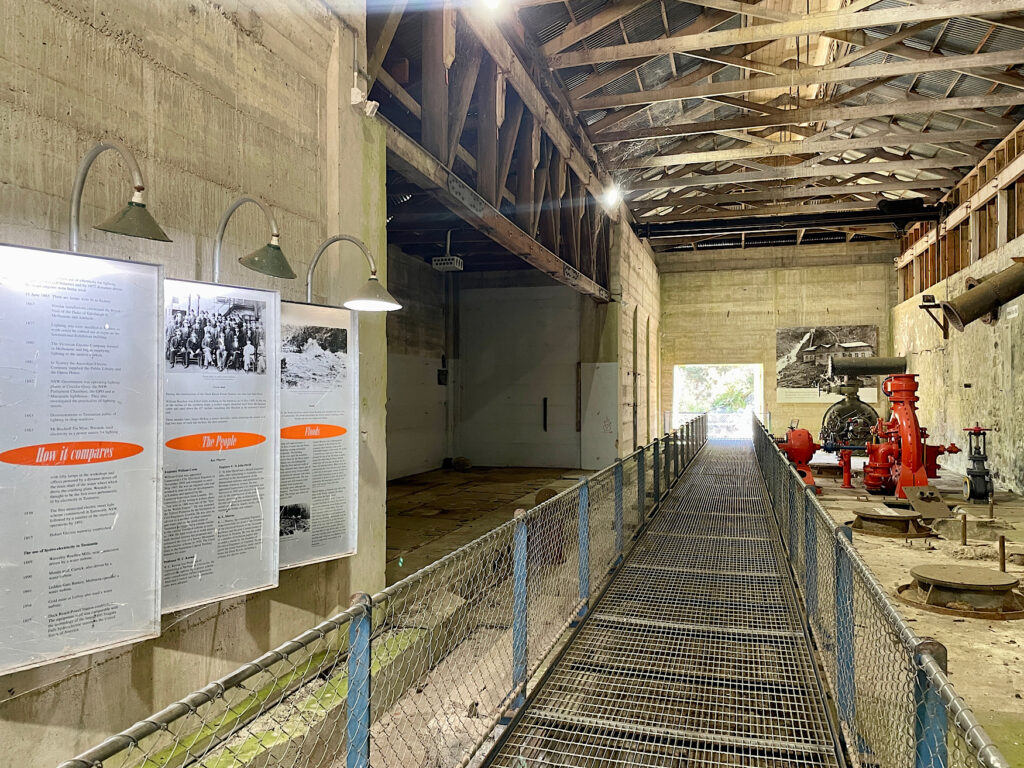
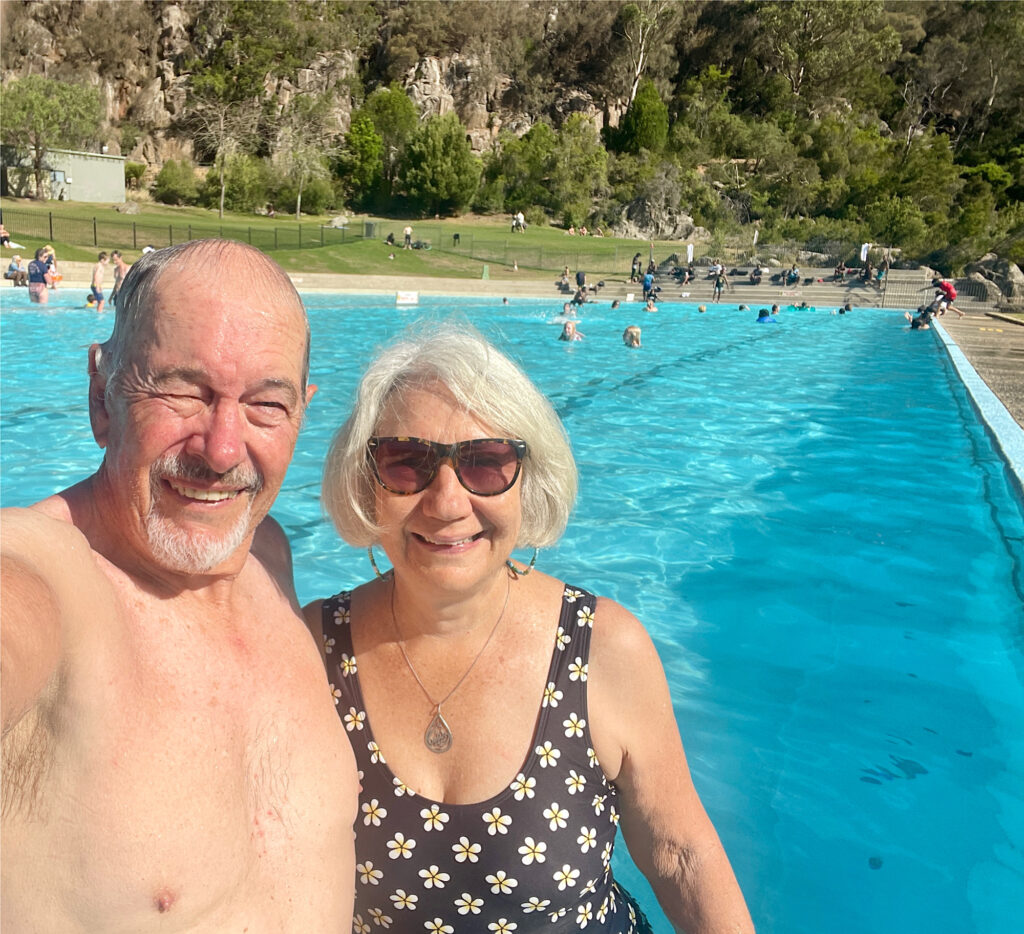
Saturday night we camped at Old Mac’s Farm ($20) after spending the afternoon reminiscing as we wandered the Lonnie CBD.
Sunday night was at Honeysuckle Banks free camp near Evandale where preparations were in full swing for next weekend’s penny farthing races.
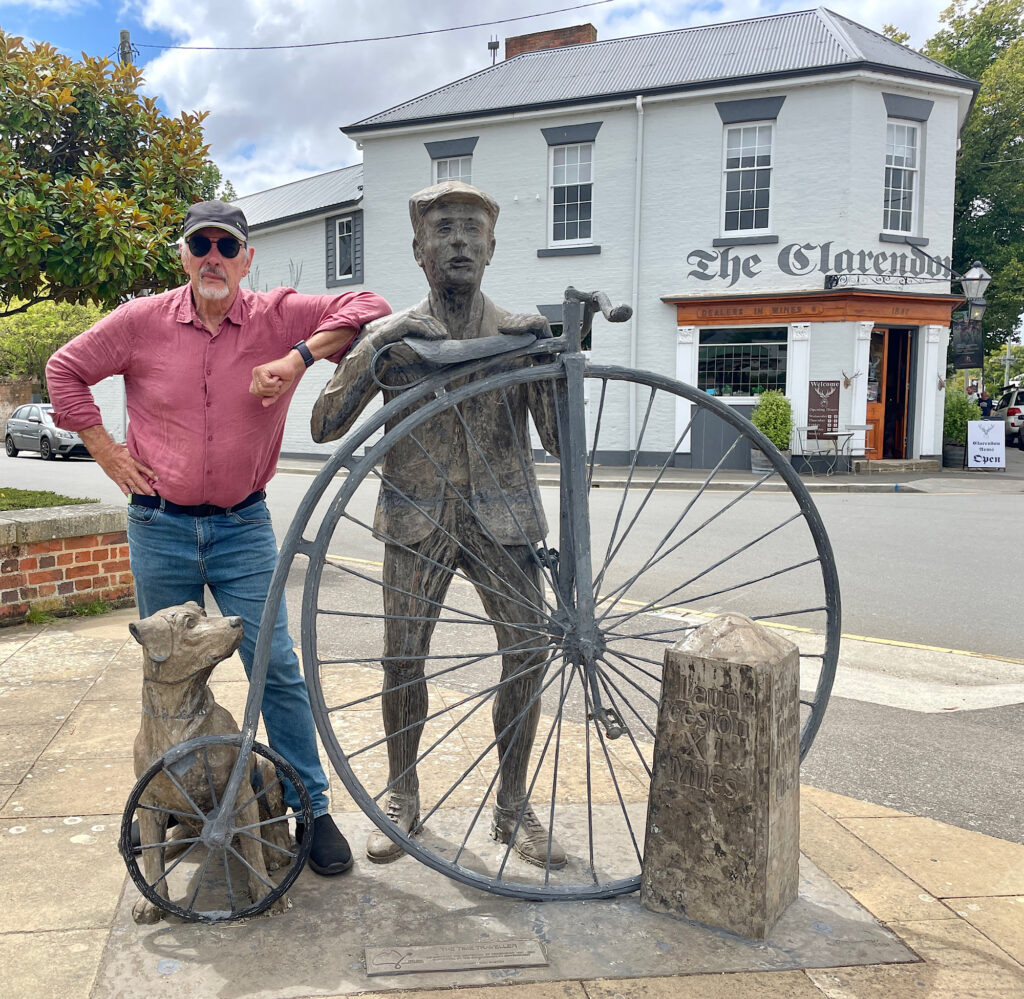
Our backpacks were emptied and repacked and weighed several times before we were finally satisfied. But generally we (particularly me) just tried to keep the nerves in check. Sunday night we camped in the carpark of the Red Feather Inn at Hadspen, the meeting point for the hike. This 6-day, 64+km hike in the Tasmanian Highlands is going to be a challenge.

